#the patriot 1928
Text
Oscar Nominee of All Time Tournament: Round 1, Group A
(info about nominees under the poll)
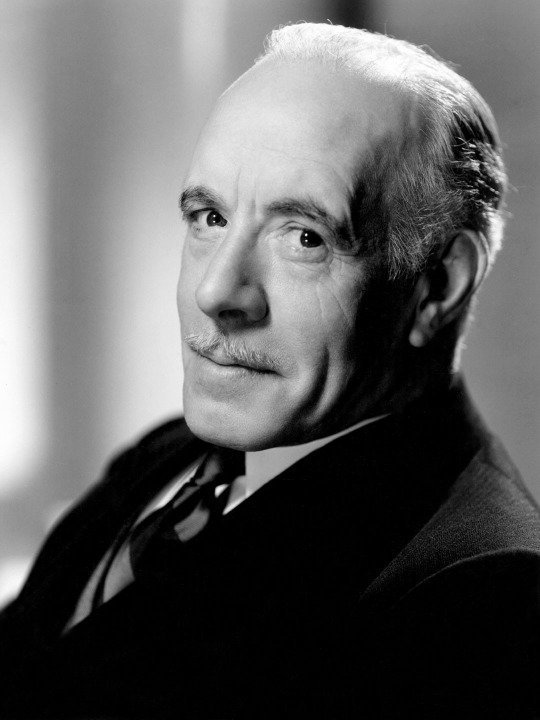

LEWIS STONE (1879-1953)
NOMINATIONS:
Lead- 1928/29 for The Patriot
--
TERENCE STAMP (1938-)
NOMINATIONS:
Supporting- 1962 for Billy Budd
#oscars#academy awards#oscar nominees#actors#film#lewis stone#the patriot 1928#terence stamp#billy budd 1962#billy budd#nominees group a#nominees group a polls
14 notes
·
View notes
Text
The War of the Pacific (1879–1883) looms large in the history of Peru and Chile. Upending the prevailing historiographical focus on the history of conflict, Beyond Patriotic Phobias explores points of connection shared between Peruvians and Chileans despite war. Through careful archival work, historian Joshua Savala highlights the overlooked cooperative relationships of workers across borders, including maritime port workers, doctors, and the police. These groups, in both countries, were intimately tied together through different forms of labor: they worked the ships and ports, studied and treated disease transmission in the face of a cholera outbreak, and conducted surveillance over port and maritime activities because of perceived threats like transnational crime and labor organizing. [...] Savala reconstructs the circulation that created a South American Pacific world. The resulting story is one in which communities, classes, and states formed transnationally through varied, if uneven, forms of cooperation.
Text above from “About the Book” section provided by the publisher (University of California Press, 2022) describing Beyond Patriotic Phobias: Connections, Cooperation, and Solidarity in the Peruvian-Chilean World. Book authored by Joshua Savala.
---
What was much more interesting to me than the well-documented and discussed nationalism that developed (in part) out of the war was the possibility of people who either did not care about such things or who actively organized against the nationalism of the era. [...] And [...] [revolutions] remained real options for many port and maritime workers across the first decades of the twentieth century. [...] In the larger manuscript, I expand on the place of maritime and port workers, looking more closely at their laboring conditions, their lives, and the politics of masculinity and sexuality at sea and at port. Another chapter examines medical cooperation during the cholera outbreak of 1886-88 in Chile. And the last chapter centers the police and their efforts to put new criminological methods into practice at home and transnationally. The broader project, then, sticks to this idea of transnational solidarity, mutual aid, and cooperation [...]. I wanted to avoid the diffusionist narrative, whether that be from a European center or from central Chile. [...] When we are researching and writing about [labor] [...], clearly many [...] sought to organize transnationally, to reach past state borders and [...] do away with borders. [...] But they were also intensely concerned with national politics and labor laws. [...] This is why [...] I try to push a dual transnational and comparative approach, to combine scales of analysis. [...] One of the other challenges to transnational history is simply the vast literatures one must read. Studying one place is hard enough [...]. The reward of such a venture, though, is pulling together debates and strands of the literature [...]. The Latin American Pacific has been largely overlooked. But thankfully in the past decade or so, we are beginning to see a number of new works that speak to the role of the Pacific. This shift in geography and analytical perspective, I would say, comes in large part from the transnational perspective -- a perspective that influenced the building of the Atlantic world paradigm as well.
Words of Joshua Savala. As quoted in the transcript of an interview conducted/posted by Sean Mannion. ‘Interview with Joshua Savala, author of “Ports of Transnational Labor Organizing: Anarchism along the Peruvian-Chilean Littoral, 1916-1928.”‘ HAHR Online (by Hispanic American Historical Review). 13 November 2019.
---
People in both countries occasionally made jokes about the other [...]. But [...] there was something beyond the one liners. [...] [T]he War of the Pacific (1879-1883) acted as the structuring event in the modern history of both countries, with conflict at the center. While certainly a reality, conflict [...] could not be the only way of telling this history, could it? [...] Labor and working-class history is at the core [...]. Maritime and port workers [...] lived and labored in a cosmopolitan Pacific world. Some did see and even engage in nationalist discourses. But many also had no interest in the nationalism of the day, and some analyzed it as just one more strategy by the state to divide the working class [...]. Addressing fellow Chilean workers in November 1924, one [...] wrote that it was time to show their Peruvian comrades that “patriotic phobias have not contaminated us.” This was the politics that animated radical workers along the coasts of Peru and Chile to organize around both local and transnational issues. Of course, maritime and port workers were not the only ones engaged in this type of thinking and acting. As I read reports from port cities, I started to read more and more about cholera in the 1880s. I followed letters from different institutions within Chile and Peru and medical journals and finally came across the case of Dr. David Matto. Born in Cusco, Matto would be sent to Chile to investigate the spread of cholera. His published letters back to Peru revealed some of the intricacies of the Chilean state’s response to the epidemic, useful information for thinking about the history of medicine [...]. The letters also showed that he worked closely with Chilean doctors, [...] and in the process built [...] a science without a nation. Beyond Patriotic Phobias builds parts of the South American Pacific to argue in favor of a more collaborative history. In addition, I also take time to think through laboring in the Pacific, constructions of masculinity and sexuality, and the history of policing. These are all parts of the equation required for understanding the transnational and oceanic history of Peru and Chile.
Text above by Joshua Savala. “A look inside Beyond Patriotic Phobias.” UC Press Blog. 23 May 2023.
32 notes
·
View notes
Text
One by one the boys begin to fall…
In 1914 a room full of German schoolboys, fresh-faced and idealistic, are goaded by their schoolmaster to troop off to the ‘glorious war’. With the fire and patriotism of youth they sign up. What follows is the moving story of a young ‘unknown soldier’ experiencing the horror and disillusionment of life in the trenches.
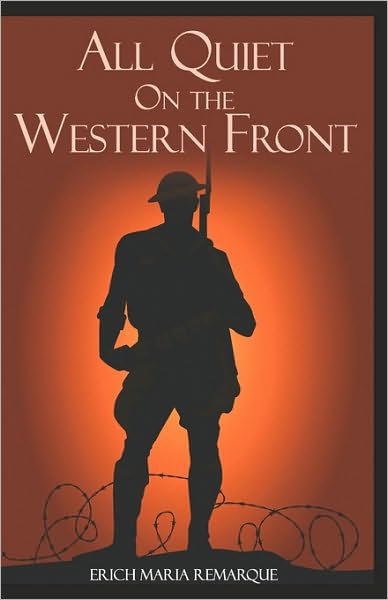

#book: all quiet on the western front#author: erich maria remarque#genre: classics#genre: historical fiction#year: 1920s
9 notes
·
View notes
Text
THIS DAY IN GAY HISTORY
based on: The White Crane Institute's 'Gay Wisdom', Gay Birthdays, Gay For Today, Famous GLBT, glbt-Gay Encylopedia, Today in Gay History, Wikipedia, and more … January 20



c.275 AD. – St. Sebastian was born in the 3rd century AD. We know the date, but not the year. He is the patron saint of archers because he was bound to a stake and shot with arrows. He is also the patron saint of soldiers. As a beautiful young man he was the favorite of the emperor Diocletian who turned against him for embracing Christianity.
Some tales speculate that the Emperor Diocletian made romantic advances upon Sebastian and was enraged when Sebastian rejected him on Christian grounds. Other stories actually refer to Sebastian as the emperor's lover. Whether or not such accounts are legitimate, the image of St. Sebastian has been linked to homoeroticism.
According to the Church's official Acta Sanctorum, Sebastian, serving under the emperors Diocletian and Maximian, came to the rescue of Christian soldiers, Marcellinus and Mark, and thereby confessed his own Christianity. Diocletian insisted that Sebastian be shot to death by his fellow archers; these orders were followed, and Sebastian was left for dead.
These details—based on accounts written centuries after Sebastian's death and therefore largely apocryphal—may have helped form Sebastian's subsequent reputation as a homosexual martyr since his story constitutes a kind of "coming out" tale followed by his survival of an execution that may be read symbolically as a penetration.
In the Renaissance, Sebastian emerged as an extraordinarily popular subject for painters, perhaps rivaled only by Jesus and Mary; he was especially prized by artists who saw in the young saint a figure of Hellenic loveliness. Numerous painters—Tintoretto, Mantegna, Titian, Guido Reni, Giorgione, Perugino, Botticelli, Bazzi ("Il Sodoma")—recast Sebastian as a martyr beatifically receptive to his arrow-ridden fate.
It was primarily the Renaissance depiction of Sebastian that served a later, explicitly homosexual cult of St. Sebastian that took hold with remarkable force beginning in the nineteenth century, with Sebastian as an modern emblem of both a homoerotically charged object of desire and a source of solace for the rejected homosexual.

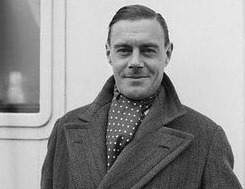
1900 – British actor Colin Clive (d.1937) is born in Saint-Malo, France to an English colonel, Colin Philip Greig, and his wife, Caroline Margaret Lugard Clive. He attended Stonyhurst College and subsequently Royal Military Academy Sandhurst, where an injured knee disqualified him from military service and contributed to his becoming a stage actor. Clive studied acting, and replaced Laurence Olivier in the stage play, Journey’s End, in 1927.
James Whale was the director of Journey's End. The two struck up an intimate relationship, and Clive played the lead in Journey’s End when it moved to the Savoy Theater in London in 1928. Clive was embraced by Whale’s theatrical friends including actress Elsa Lanchester. He followed Whale to New York City and Whale facilitated the casting of Clive in the movie version of the play.
Journey’s End was Clive’s first of 18 feature films. Clive appeared on Broadway in Overture. When the play closed, he went to London and starred with Elsa Lanchester in The Stronger Sex.
Clive is perhaps best known for playing the role of Dr. Henry Frankenstein in the James Whale-directed Frankenstein (1931) and in the Bride of Frankenstein (1935) with his friend Elsa Lanchester.
Though Clive was gay, he married actress Jeanne de Casalis in 1929, but the marriage was one of convenience, and they separated a short time later.
Clive was a member of the Brit ex-patriot actors in Hollywood including Lanchester, Karloff and Charles Laughton, and remained close with Whale.
The actor struggled with his sexual identity and suffered alcoholism and depression from an early age. His drinking became more and more problematic professionally. He often came to work drunk and passed out on the set. He was even fired from a starring role in a film when he suffered a breakdown.
Clive’s final film was in 1937, The Woman I Love. Colin Clive died on June 25, 1937, of tuberculosis complicated by chronic alcoholism. He was 37 years old. Actress Mae Clarke, one of his leading ladies, said, "Colin was the handsomest man I ever saw and also the saddest."

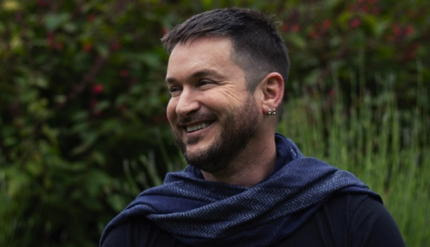
1971 – Darren Main is a yoga teacher and author currently living in San Francisco. He has written largely about Eastern spirituality for a more modern and Western audience. Main is best known for his second book, Yoga and the Path of the Urban Mystic. He has written several other books: Inner Tranquility: A Guide to Seated Meditation", "Spiritual Journeys Along the Yellow Brick Road"; a controversial book, "Hearts and Minds: Talking to Christians About Homosexuality" and "The Yogi Entrepreneur: a Guide to Earning a Mindful Living Through Yoga." Main's writing has been translated in various languages and several of his books have been released in numerous editions.
Main also maintains a podcast called "Inquire Within" in which he interviews various individuals on topics such as healing, spiritualism, and social activism.Main was born in Westerly, RI. He is the single father to an adopted son.
Main's adolescent years were "filled with pain, rage and confusion" which led to drug abuse and depression. After a suicide attempt, Main claimed to have had a spiritual awakening. This spiritual awakening led Main to Alcoholics Anonymous and to Narcotics Anonymous and to Hatha Yoga and Meditation. Main also became a student of A Course in Miracles.
Main studied Social Work at Mohegan community College, Community College of Rhode Island and at Rhode Island College. He also studied massage therapy at the Bancroft School of Massage Therapy in Worcester, MA and trained to become a yoga and meditation instructor at The Kripalu Center in Lenox, MA.
Main began teaching yoga in Providence, RI in 1992. He spent a year teaching in Bozeman, MT in 1993. Main moved to San Francisco, CA in 1994 where he currently teaches. In 1998, Main opened a San Francisco yoga studio, Castro Yoga with David Nelson. In 2000, Castro Yoga closed and Main began teaching for San Francisco’s largest yoga studio,Yoga Tree. In addition to his weekly yoga classes and various workshops, Main is also the Director of Yoga Tree's Teacher Training program. His books have become required text in a number of yoga teacher certification programs throughout the United States.
Shortly after his first book was released in 1999, Main began teaching throughout the United States and internationally.
Main teaches one of the largest weekly yoga classes in the world at San Francisco's iconic Grace Cathedral. This donation-based yoga class features renowned recording artists and musicians playing live music and attracts as many as 700 students per week. The class has been featured in local as well as national press and has been criticized by some conservative Christian groups.
In April 2006, Main founded a Naked Yoga for Men group in San Francisco and began teaching naked yoga (for men) at Mission Yoga.
Main also writes articles and has contributed to Gay.com, White Crain Journal and the Kaiser Permanente HIV Update Newsletter.


1974 – Michael Stabile is an American journalist and documentary filmmaker best known for his work in and about the pornography industry. His work has appeared in Playboy, The Daily Beast, Buzzfeed and Salon.com. In 2004, he and Jack Shamama co-created the gay pornographic soap opera Wet Palms for which they won a GayVN Award for Best Screenplay. He has also written several other GayVN-nominated movies including Spokes III, Cross Country, and Master of the House. Two of the films were included in "Top 10 Gay Porn Movies of the Decade" by Gawker Media's Fleshbot with credit given to the writing team of Stabile and Shamama.Since 2003, Stabile has edited Gay Porn Blog and in 2005 became producer of The Tim and Roma Show, a web-based talk show about the gay adult industry. In 2008, Stabile launched gay news site TheSword.com. He has been named "an arbiter of taste for gay porn" by the Village Voice.
Stabile has also been featured in the San Francisco Bay Guardian, the San Francisco Chronicle, Gay.com, Time Out, Cybersocket, and the Huffington Post.Stabile is working with Shamama and cinematographer Ben Leon on Seed Money, a documentary about Falcon Studios' founder and GLBT philanthropist Chuck Holmes, currently in production. Their documentary short, Smut Capital of America premiered at the 2011 Tribeca Film Festival on April 24, 2011. In late 2011, Stabile began working with Warhol Superstar Holly Woodlawn on a documentary about her life.


1979 – Will Young is an English singer and actor. He catapulted to fame in 2002 after winning the inaugural UK Pop Idol contest. He has continued to work in music, and also as an actor.
Contrary to popular belief, Will did not come from behind to win the contest. After having beaten the widely-accepted frontrunner Gareth Gates in the final show, it emerged that he had in fact gained the most votes in six out of the nine weeks of the live show.
Young's first single was a double A-side featuring Evergreen and Anything Is Possible. In March 2002 this became the fastest-selling debut in UK chart history, selling 403,027 copies on its day of release (1,108,659 copies in its first week). It went on to sell over 1.7 million copies, and in the official list of the all-time best-selling singles in the UK issued later that year it was 11th. On 31 December 2009, Radio 1 confirmed that Anything Is Possible/Evergreen was the biggest selling single of the 2000s decade in the United Kingdom.
Young subsequently revealed that he was gay, in order to pre-empt a tabloid newspaper that was preparing to run a story 'outing' him. He also stated that he had never hidden, and was comfortable with, his sexuality.
Later in the year, Young met comedian David Walliams and the pair became good friends, with Young appearing at the Little Britain live stage show in Manchester, and later recording a podcast with Walliams, in which they chatted about various aspects of Young's career.
Will added acting to his repertoire when he accepted a role in the BBC film Mrs Henderson Presents, starring Judi Dench and Bob Hoskins. The film was released in the UK in November 2005 to excellent reviews — not least for Young's performance as both actor and singer in the film.


1980 – Yusaf Mack is an American professional boxer. He has held regional titles from the USBA (Now the IBF), NABA, UBA, and NABF. Mack has fought several former world champions, including Alejandro Berrio, Glen Johnson and Carl Froch.
Mack made his professional boxing debut at middleweight on November 17, 2000 in Biloxi, Mississippi. In his first 24 fights, Mack compiled a record of 22-0 with two draws. Throughout his early fights Mack moved between the middleweight, super middleweight, and light heavyweight divisions.
Mack is a father of ten children and was engaged to a woman. In 2015, he appeared in a Dawgpoundusa.com production titled Holiday Hump'n along with gay pornographic actors Bamm Bamm and Young Buck under the name Philly. He initially claimed he had been drugged by the film's producers and had no recollection of making the film, but later told WTXF-TV that he was gay and had lied to cover that up.
Yusaf later had a "coming out party" at Rage nightclub in Weho, a longtime landmark on the L.A. gay scene.

Today's Gay Wisdom
For The Straight Folks Who Don't Mind Gays But Wish They Weren't So BLATANT
by Pat Parker
You know, some people got a lot of nerve.
Sometimes I don't believe the things I see and hear.
Have you met the woman who's shocked by two women kissing
and in the same breath, tells you she is pregnant?
BUT gays, shouldn't be so blatant.
Or this straight couple sits next to you in a movie and
you can't hear the dialogue because of the sound effects.
BUT gays shouldn't be so blatant.
And the woman in your office spends an entire lunch hour
talking about her new bikini drawers and how much
her husband likes them.
BUT gays shouldn't be so blatant.
Or the "hip" chick in your class rattling like a mile a minute
while you're trying to get stoned in the john, about the
camping trip she took with her musician boyfriend.
BUT gays shouldn't be so blatant.
You go in a public bathroom and all over the walls there's John loves
Mary, Janice digs Richard, Pepe loves Delores, etc., etc.
BUT gays shouldn't be so blatant.
Or your go to an amusement park and there's a tunnel of love
and pictures of straights painted on the front and grinning
couples are coming in and out.
BUT gays shouldn't be so blatant.
Fact is, blatant heterosexuals are all over the place.
Supermarkets, movies, on your job, in church, in books, on television every day
day and night, every place - even in gay bars and they want gay
men and woman to go and hide in the closet.
So to you straight folks I say, "Sure, I'll go if you go too"
BUT I'm polite, so, after you.


9 notes
·
View notes
Text


In 1966 the SR 71 disintegrating ! The pilot, and the RSO’s did not eject they were thrown out.. I wrote this article a few years ago in aviationgeek club. Here it is.
In 1966 test Pilot Bill Weaver bailed out after his SR-71 disintegrated while flying at Mach 3.18 at 78,800 feet and by some sort of miracle he made it down to New Mexico alive and well. The RSO Jim Zwayer was not so lucky.
On Jul. 28, 2021 the aviation community lost another of its icons, Lockheed test pilot Bill Weaver.
Weaver was born on Dec. 6, 1928 in the Hollywood Hospital in Los Angeles.
According to Roadrunners Internationale, he attended college at UCLA for a year before being accepted at Annapolis. Graduating June 1951, 25% of the graduates from Annapolis and West Point were offered the choice of joining the US Air Force formed in 1947. He chose the Air Force where he went through flight training at the Hondo Air Base near San Antonio, (South Texas Training Center & South Texas Regional Airport), built 4 months after the attack on Pearl Harbor in a record 90 days. Weaver graduated in class 52E and was sent to Williams AFB for advance training before deploying to Kaegu, Korea (T-2) in 1952 where he flew 89 missions in the F-89 Scorpion and F-86 Sabre. Leaving the USAF, he joined the Lockheed Skunk Works where his second cousin, Engineer Dorsey Kammerer worked for Kelly Johnson. During a span of 30 years at Lockheed, Bill flight tested all models of the Mach-2 F-104 Starfighter and the entire family of Mach 3+ Blackbirds–the A-12, YF-12 and SR-71. Weaver subsequently was assigned to Lockheed’s L-1011 project as an engineering test pilot, became the company’s chief pilot and retired as Division Manager of Commercial Flying Operations. He flew the Orbital Sciences Corp.’s L-1011, modified to carry a Pegasus satellite-launch vehicle. An FAA Designated Engineering Representative Flight Test Pilot, he was also involved in various aircraft-modification projects, conducting certification flight tests. According to Roadrunners Internationale Weaver once said,
“Among professional aviators, there’s a well-worn saying: Flying is simply hours of boredom punctuated by moments of stark terror.”
And yet, I don’t recall too many periods of boredom during my 30-year career with Lockheed, most of which was spent as a test pilot.”We lost a brave patriotic American Bill Weaver. Our sincere condolences go to his family. Bill flew in test flight every member of the Blackbird family.
In 1966 he also bailed out after his SR-71 disintegrated while flying at Mach 3.18 at 78,800 feet and by some sort of miracle he made it down to New Mexico alive and well. The RSO Jim Zwayer was not so lucky. He [Weaver] had a long successful career as a test flight pilot. I was told he was still flying into his 80s. We salute you,’
Linda Sheffield Miller (Col Richard (Butch) Sheffield’s daughter, Col. Sheffield was an SR-71 Reconnaissance Systems Officer) says on her Facebook Page Habubrats. Published by Dario Leone
@Habubrats71 via Twitter

17 notes
·
View notes
Text

Pisarev A.I. "Village Children" 1962. Oil on canvas. Size 49.5x70 cm.
Pisarev Alexey Ivanovich (1909-1973) - Painter. Member of the Union of Artists. In the 1928s and 1930s, he studied at the Voronezh Art College with A.A. Buchkuri. Then in 1931 he graduated from the School of Painting named after In memory of 1905 in the workshop of K.N. Istomina. From the mid-1930s to 1939, he studied at advanced training courses for artists at the Moscow Art Institute in the workshop of B.V. Ioganson and A.V. Moravova. Participant of the Great Patriotic War. Participated in various, including all-Union, exhibitions of the Moscow Union of Artists. He worked mainly in the genre of landscape. He performed two large-format canvases for the Museum of Earth Science of Moscow State University.
Art Molotov
7 notes
·
View notes
Text
“The future belonged to the showy and the promiscuous”: Why the 21st Century Loves Edith Wharton
Emily J. Orlando
E. Gerald Corrigan Chair in the Humanities & Social Sciences and Professor of English
Fairfield University
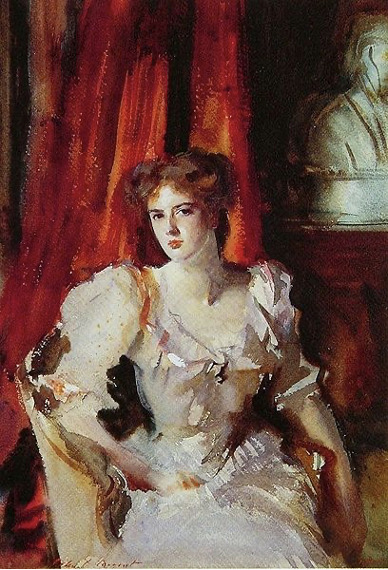
Photo: John Singer Sargent, Sybil Frances Grey, later Lady Eden 1905.
If ever there were a good time to read the American writer Edith Wharton (1862-1937), who published over forty books across four decades, it’s now. Since the Wharton revival of the late 20th century, when directors were adapting (the Pulitzer-Prize winning) The Age of Innocence, Ethan Frome, The Buccaneers, and The House of Mirth, her star has continued to rise. As I yesterday prepared to teach The Custom of the Country, which many have called Wharton’s greatest novel, a friend texted me Sofia Coppola’s article on the surprising appeal of its social-climbing heroine. Coppola is developing Undine Spragg’s story for Apple TV. A kind of Gilded Age Material Girl, Undine has been ready for her close-up for years.
Coppola joins an impressive roster of contemporary admirers of Wharton that includes Roxane Gay, Laura Bush, Lisa Lucas, Peggy Noonan, Jennifer Egan, Stephin Merritt, Claire Messud, Meg Wolitzer, Mindy Kaling, Doug Hughes, Brandon Taylor, Ta-Nehisi Coates, Ali Benjamin, Vendela Vida, Ottessa Moshfegh, and Kristin Hannah. At a time when publishing houses are compelled to scale back, new editions of Wharton’s books are appearing in print with introductions by Coppola, Egan, and Taylor.

Photo: Sofia Coppola.
Those who think they don’t know Wharton might be surprised to learn they do. A reverence for Wharton’s writings informs Sex and the City (whose pilot welcomes us to “the Age of Un-Innocence”), Gossip Girl, Downtown Abbey (whose “Lady Edith” suggests a nod to Wharton), and HBO’s The Gilded Age which, like Downton, is created by the Wharton-appreciating Julian Fellowes. His Bertha and George, after all, are named for the power couple from The House of Mirth.
But why Wharton? Why now? Perhaps it’s because for all its new technologies, conveniences, and modes of travel and communication, our own “Gilded Age” is a lot like hers. For the post-war and post-flu-epidemic climate that engendered The Age of Innocence is not far removed from our post-COVID-19 reality. In both historical moments, citizens of the world have witnessed a retreat into conservativism and a rise of white supremacy. Fringe groups like the “Proud Boys” and “QAnon” and deniers of everything from the coronavirus to climate change and Sandy Hook are invited to the table in the name of free speech, and here Wharton’s distrust of false narratives resonates particularly well. Post-9/11 calls for patriotism and the alignment of the American flag with one political party harken back to Wharton’s poignant questioning, in a 1919 letter, of the compulsion to profess national allegiance:
how much longer are we going to think it necessary to be “American” before (or in contradistinction to) being cultivated, being enlightened, being humane, & having the same intellectual discipline as other civilized countries?[i]
Her cosmopolitan critique of nationalist fervor remains instructive to us today.
Edith Wharton seems to have foreseen the excesses, obsessions, and spectacles of our current moment. The scandals documented in Wharton’s narratives serve as harbingers of the sensations that flash across our hand-held screens. Jeffrey Epstein’s sex trafficking touches on the same nerve as the sexual exploitation of minors in Wharton’s Summer (1917) and The Children (1928). The quid pro quo run-in between Wharton’s Lily Bart and Gus Trenor looks uncomfortably forward to Harvey Weinstein and #MeToo. The rise to power of Donald Trump would not surprise Edith Wharton.
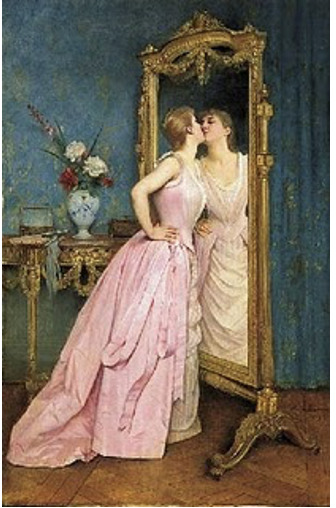
Photo: “Vanity,” by Auguste Toulmouche, circa 1870.
Wharton’s tenacious Undine Spragg—as horrifying to progressive era readers as she is admired by Generation Z—can be conceived of as the original social media influencer conscious of her brand. For Undine and her creator know that “the future belonged to the showy and the promiscuous”[ii] and that the turn-of-the-century “world where conspicuousness passed for distinction”[iii] foreshadows our own. Wharton would describe Undine in terms we might use for a “Real Housewife of Park Avenue”: “If only everyone would do as she wished she would never be unreasonable” (162). Undine’s world encourages her to aspire to the rank of trophy wife and the sexual double standard dictating that “genius is of small use to a woman who does not know how to do her hair”[iv] would apply to Wharton herself who, on the 150th anniversary of her birth, would be assessed by a male novelist in terms of how she sizes up to Grace Kelly or Jackie Kennedy.[v] The writer who would declare, in her wildly popular interior design manual The Decoration of Houses, privacy “one of the first requisites of civilized life”[vi] would be appalled by what is broadcast across social media. Wharton also would’ve anticipated the racism directed at Meghan Markle and why granting Oprah an interview would not help relations with her spouse’s family. Children forcibly separated from families due to morally dubious immigration policies echo the plight of war refugees for whose welfare Edith Wharton labored, while the distrust of the cultural other echoes the writer’s own complicated nationalist allegiances.[vii]
Ten years ago, Lev Raphael took the temperature of Wharton studies declaring in the Huffington Post: “Edith Wharton is hot.” She is now positively on fire. I offer below a short excerpt from the introduction to The Bloomsbury Handbook to Edith Wharton, which appears in print today.
*********************

The image gracing the cover of The Bloomsbury Handbook to Edith Wharton, capturing a scene on the terrace of Edith Wharton’s French home, reflects the cultural work that this book takes as its task. The writer is in her element: she cradles in her lap her beloved dogs, she sits outdoors at a well-appointed property she lovingly transformed, she surrounds herself with fashionably dressed cosmopolitans, and she smiles. The moment validates an idea expressed in The Age of Innocence: that “the air of ideas is the only air worth breathing.” As host, Wharton, by this point an internationally acclaimed artist, has brought together representatives of an admiring generation from diverse backgrounds that would outlive and perhaps learn from her. That sunlit terrace is doing something we hope this book will do: provide a foundation for future conversations with Edith Wharton at the center.

Photo: Edith Wharton publicity shot.
Around the time this photograph was taken, Wharton would reflect in A Backward Glance that “[t]he world is a welter and has always been one; but though all the cranks and the theorists cannot master the old floundering monster, . . . here and there a saint or a genius suddenly sends a little ray through the fog, and helps humanity to stumble on, and perhaps up” (379). Wharton’s writings arguably send a ray and help humanity stumble on and up in our own Gilded Age. It is the aim of this collection of essays, produced by leaders in the field at a time of global crisis, to make a meaningful contribution to the scholarship on and dialogue about the work of Edith Wharton and to open up new possibilities for understanding and embracing a writer whose corpus is as enormous as it is resonant. To borrow from Wharton’s preface to her anthology The Book of the Homeless (1916), in which she conceives of her volume, as she so often does, as a house: “You will see from the names of the builders what a gallant piece of architecture it is. . . . So I efface myself from the threshold and ask you to walk in.”[viii]
Emily J. Orlando is the E. Gerald Corrigan Chair in the Humanities & Social Sciences and Professor of English at Fairfield University. She is the author of Edith Wharton and the Visual Arts and editor of The Bloomsbury Handbook to Edith Wharton. She is currently preparing for publication a new edition of Edith Wharton’s first book, The Decoration of Houses.
[i]Lewis, Letters, 424.
[ii]Edith Wharton, The Custom of the Country, New York, Penguin, 2006, 117.
[iii]Edith Wharton, The House of Mirth, ed. Elizabeth Ammons, 2nd Norton Critical ed. (New York: Norton, 2018), 186.
[iv]Edith Wharton, The Touchstone, in Wharton, Edith, Collected Stories, 1891-1910, ed. Maureen Howard (New York: Library of America, 2001), 170.
[v]Jonathan Franzen, “A rooting interest: Edith Wharton and the problem of sympathy,” The New Yorker, February 5, 2012.
[vi] Edith Wharton and Ogden Codman, Jr., The Decoration of Houses (New York: Charles Scribner’s Sons, 1897), 22.
[vii]See Melanie Dawson, “The Limits of Cosmopolitan Experience in Wharton’s The Buccaneers.” Legacy 31.2 (2014): 258-80. Print.
[viii]Edith Wharton, Preface to The Book of the Homeless (Le Livre des Sans-foyer) (New York, Charles Scribner’s Sons, 1916), xxiv-xxv.
#Emily J. Orlando#Fairfield University#Edith Wharton#Gossip Girl#The Custom of the Country#Sofia Coppola#The Age of Innocence#Undine Spragg#Summer#The Book of the Homeless
57 notes
·
View notes
Text
Andy #Warhol was born #OTD (6 August 1928 – 22 February 1987). Here’s a unique life-size portrait of Warhol holding his dachshund Archie by his friend Jamie Wyeth, on display at Brandywine Museum of Art:
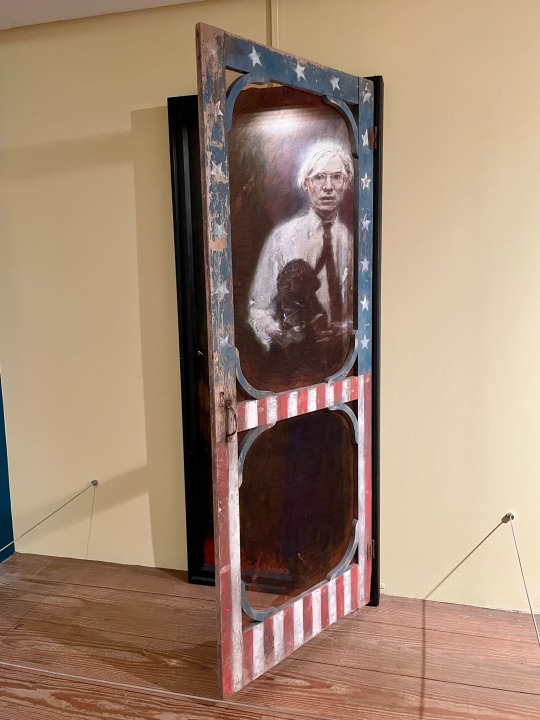
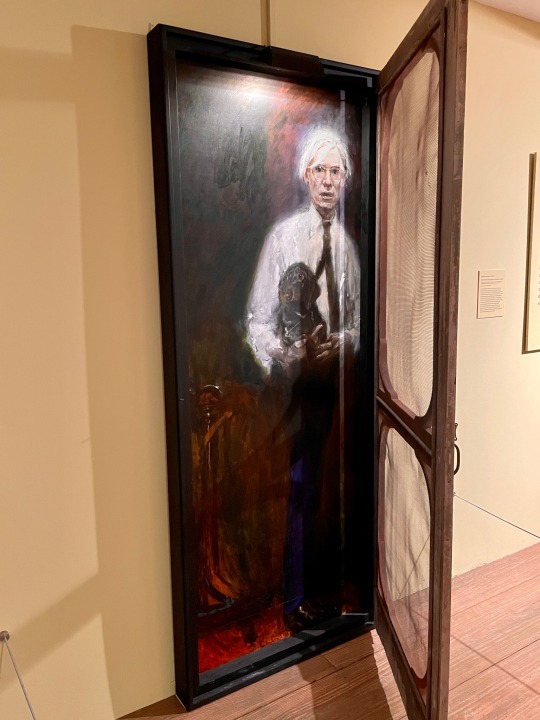


Jamie Wyeth (b. 1946)
First in the Screen Door Sequence, 2015
Oil on canvas on honeycomb aluminum support with American folk art
"found object" construction of wood, metal, screen & hardware
Brandywine Museum of Art
“In some of Jamie Wyeth's more recent work he has begun to cross the boundaries between painting, sculpture, and real life by using objects like doors and windows as the starting point of his compositions. He adds paintings, specialty lighting, and other objects to make what is sometimes called an "assemblage" a collection of things brought together to make a single work of art. First in the Screen Door Sequence is an actual wooden screen door that Wyeth found decorated with patriotic stars and stripes. It was already a piece of American folk art when Wyeth added a painted panel depicting a life-size portrait of Andy Warhol holding his dog Archie.”
#animals in art#Andy Warhol#Jamie Wyeth#museum visit#Brandywine Museum of Art#contemporary art#21st century art#2010s#multimedia art#installation art#portrait#portrait painting#dog#dachshund#pet#pet portrait#dogs in art#OTD#birthday post
12 notes
·
View notes
Text
Person: What are you thinking about?
Me: Oh, nothing much.
Me, internally: Okay, so in “Amphibia”, Marcy isn’t just a person of Chinese descent, she’s specifically of Taiwanese descent. And although Taiwan is what Westerners call the island nation, it’s actual name for itself is the Republic of China because it sees itself as the actual Chinese state in exile and the People’s Republic of China on the mainland as the usurpers. And considering the Fu dogs we see outside the Wu family home in “True Colours”, it is very likely they are at least somewhat patriotic. Therefore, it’s very likely that Marcy grew up with a fair deal of patriotic nostalgia for pre-Communist China being instilled into her both directly and indirectly. And it’s very possible that these beliefs are a big reason why she sympathised so much with Andrias and fell so easily for his romanticised depiction of what pre-Calamity Box Theft Newttopia was like. Therefore, it can be said that there’s a small but distinctive theme of overcoming blind nationalism/patriotism/traditionalism in Marcy’s arc as part of the larger theme of her having to deal with uncomfortable realities and truths.
Also, did you know that Jiang Jieshi/Chiang Kai-shek, President of China at various points between 1928 and 1975 and founder of the Republic of China in Taiwan, was of the Wu ethnic group?
@theplantarsdeservebetter @thegunslingerfollowed @lady-asteria @disregardcanon
#Amphibia#Amphibia spoilers#Marcy Wu#Marceline Regina Wu#King Andrias#Andrias Leviathan#politics cw#nationalism cw#Amphibia meta#Fairly long post
25 notes
·
View notes
Text
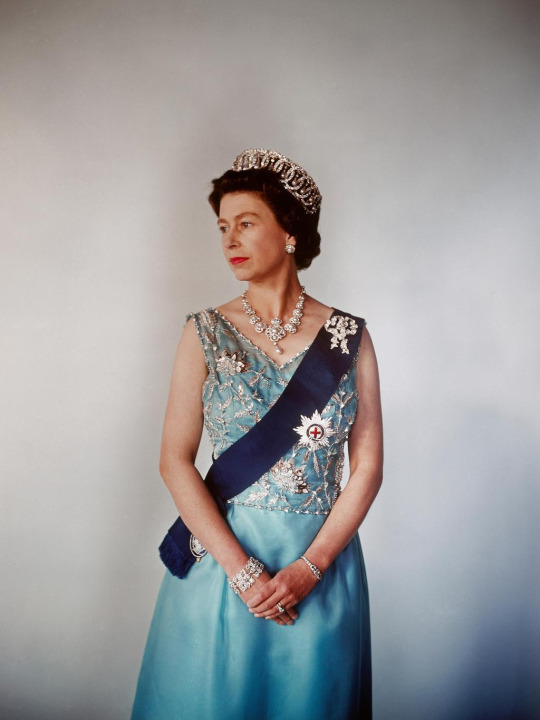
QUEEN ELIZABETH II
By Steve Dougherty and Larry Sutton | Published 17 September 2022
Time Magazine International Edition
QUEEN ELIZABETH II WAS THE WORLD’S LONGEST-serving head of state when she died at 96 on Sept. 8. She had led her subjects for more than seven decades—an extraordinary reign that began in 1952, and spanned 15 British Prime Ministers and 14 U.S. Presidents. She inherited the throne of a country almost broken by the legacy of war, and remained upon it through a time of epochal change for both the U.K. and the world.
When Elizabeth took the throne, the U.K. was the seat of an empire that straddled the globe. Today, Britain is a smaller player on the world’s stage, but she remained the sovereign leader of 15 nations—including Australia, Canada, and New Zealand—and head of a Commonwealth of more than 50 nations. She traveled the globe as an ambassador for British achievements, acts of charity, and values. She was also devoted to upholding the “special relationship” between the U.K. and the U.S., engaging with every President from Harry Truman to Joe Biden over a period of more than 70 years. And even as the world changed in profound ways, many saw her as a steadfast rock of patriotic duty. As her grandson Prince William wrote in the preface to a 2015 biography, “I think I speak for my generation when I say that the example and continuity provided by the Queen is not only very rare among leaders but a great source of pride and reassurance … I am privileged to have the Queen as a model for a life of service to the public.”
ELIZABETH ALEXANDRA MARY WINDSOR was born by cesarean section at 2:40 a.m. on April 21, 1926. She was an heir to the throne, but third in the line of succession. Her father Prince Albert—Bertie to friends and family—was the second son of the reigning monarch, King George V. His older brother David, known by his royal appellation Edward of Wales, was first in line to the throne—but also single, childless, and already rumored to have little interest in inheriting his father’s crown.
The early life of Princess Elizabeth was chronicled with zeal both by the British press and in the former colonies. “The water was from the River Jordan,” TIME reported of the elaborate christening pageantry staged in the private chapel at Buckingham Palace. Sir Winston Churchill first met Elizabeth at Balmoral Castle in 1928, when she was 2, and proclaimed that he saw in her “an air of authority and reflectiveness astonishing in an infant.”
No one in the realm was more enamored with the young Elizabeth than its monarch, who gave her the place of honor on his lap when they rode through the streets of London in his royal stretch Daimler. “No one else except the Queen rides out so often with the King,” TIME reported. Left out of the spotlight, not ungladly, was Lilibet’s father—the self-deprecating Bertie, who once told reporters, “My chief claim to fame seems to be that I am the father of Princess Elizabeth.”
Her reign as only child ended at age 4, in 1930, with the birth of her sister, Margaret Rose, at Glamis Castle in Scotland, their mother’s ancestral home. The girls romped together on the palace grounds and royal country estates, played with their terrier puppies and corgis—Elizabeth’s lifelong favorite. They also stabled, cared for, and learned to train a royal succession of pet ponies, and shared the same nannies and governesses.
In January 1936, upon the death of Lilibet’s grandfather George V, her uncle David became King Edward VIII. Almost immediately, his eldest niece and all the royal family became prime players in a 20th century succession drama. Edward’s tumultuous 10-month reign as King ended on Dec. 10, 1936, when he scandalized the world by abdicating the throne to marry the twice-divorced American socialite Wallis Warfield Simpson. “I always told those idiots not to put me in a golden frame,” he said. Young Lilibet was only 10 when she learned she would become Queen after her father’s death.
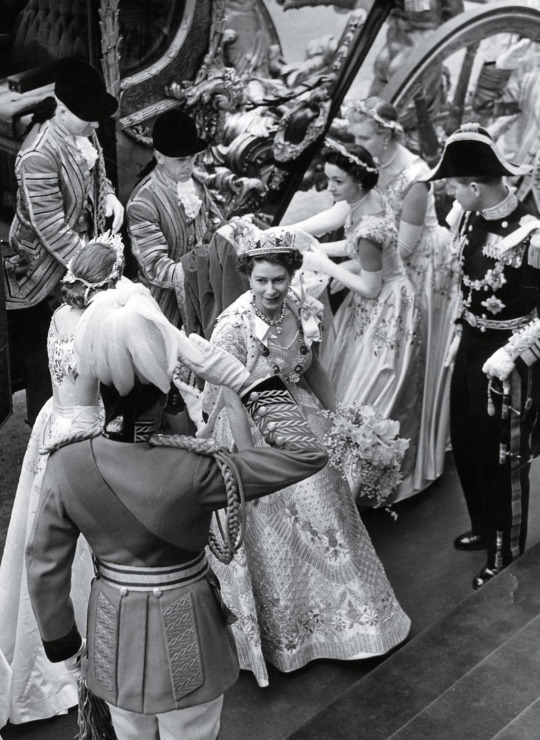
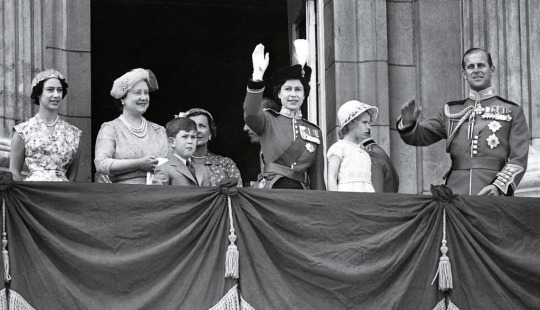
ELIZABETH WAS BARELY A TEENAGER when, on Sept. 3, 1939, Britain declared war on Nazi Germany. The war’s threat had already thundered throughout Europe, and soon the kingdom Elizabeth would one day rule, along with much of the rest of the world, was engulfed in war. Less than a year later, Hitler entered Paris and promised to make Britain his next conquest. Soon the Blitz—day and night Luftwaffe bombing raids that rained fire and terror over cities throughout England—was at full roar.
And so the Princess spent her teens knitting socks for British soldiers, collecting tinfoil, and rolling bandages for the war effort. She would send portions of her 5-shilling weekly allowance to emergency child-welfare funds, wear secondhand clothes, adhere to the war-rations diet dictated for all Britons, and live frugally despite being a teenage Princess and heir to the British throne.
Even as bombs fell on Buckingham Palace, the royal couple refused entreaties to abandon London and evacuate Princess Elizabeth and Princess Margaret to Canada. “The children won’t go without me,” said the Queen. “I won’t leave without the King. And the King will never leave.”
The King’s decision to remain in England for the duration of the war, enduring its deprivations along with his subjects, endeared him to the beleaguered nation. But it also made the likelihood that Elizabeth might suddenly be called to the throne in the event of her father’s death seem palpable.

The future monarch began her public life with her first live BBC radio broadcast in October 1940. Displaying poise and pluck, she addressed the tens of thousands of children who were evacuated from their homes and separated from their families at the height of the Blitz. “My sister, Margaret Rose, and I feel so much for you as we know from experience what it means to be away from those we love most of all,” she said in a clear voice that offered a hint of the calm and compassion that many would come to admire.
When in 1944 she reached military age at 18, Elizabeth joined the Auxiliary Territorial Service, one of the wartime women’s units. She spent three weeks at the Mechanical Transport Training Center, where she trained as a mechanic and truck driver. The labor left her covered in grease and grime and not a little well-earned pride.
And she never partied so hard as she did a fortnight after her 19th birthday when, on May 8, 1945—Victory in Europe Day—she joined the ecstatic and rowdy street celebrations that swept London following Germany’s surrender. After standing in uniform on the balcony at Buckingham Palace to greet cheering crowds alongside the King, Queen, and Prime Minister Winston Churchill, she, her sister, a group of friends, and a few guardians linked arms and ran among the crowds that surged through the city. For two nights in a row she “walked simply miles,” she wrote in her journal, “ate, partied, bed 3 a.m.!” These were, she would say 40 years later, among “the most memorable nights of my life.”
YEARS BEFORE, ELIZABETH had visited a naval college at Dartmouth where she had been greeted by a towering 18-year-old cadet.
Prince Philip of Greece and Denmark was born on the Greek island of Corfu on June 10, 1921, nephew of King Constantine of Greece and distant relation to Britain’s Queen Victoria. As his family drifted apart he was sent, at the age of 9, to England to live with his grandmother, the widow of the great British naval commander and German Prince Louis Alexander Mountbatten. He was schooled in England, Germany, and Scotland, and became a fine young athlete—as Elizabeth would note to her governess, Crawfie, on that trip to Dartmouth: “How good he is, Crawfie. How high can he jump!”
Elizabeth corresponded with Philip throughout the war, and after its end the Prince was placed on shore duty at a naval base on England’s south coast. He often made the 100-mile trek to London in his small black MG, frequently stopping at Buckingham Palace. As the friendship grew into a romance, Elizabeth was delighted. Her father George? Not so much—at first. “His loud, boisterous laugh and his blunt, seagoing manners … irritated the gentle King,” TIME reported in 1957. Despite that chill, Elizabeth and Philip decided to marry after a short stay with her family at Balmoral Castle in the summer of 1946. The King’s lack of enthusiasm for Elizabeth’s beau—an attitude sparked, in part, by his concern over how the people of Britain would take to a foreign-born prince marrying the heiress to the throne—frustrated the Princess. “There was many a tense moment for George as Elizabeth moped about in tearful martyrdom while her mother and grandmother, the doughty old Queen Mary, fought her battle for her. At last, George decided that the young couple (she was 20, he 25) should wait six months to make sure of each other,” noted TIME.
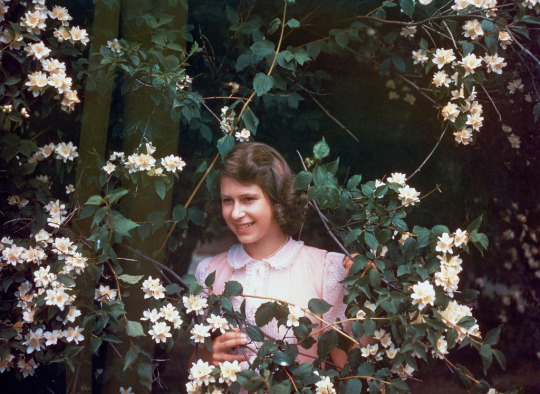
There were obstacles to overcome, but none insurmountable. Philip became a British citizen, and public-opinion polls showed that a majority of the nation’s populace favored his marrying the Princess. The official announcement did not come until July 9, 1947, followed by the couple’s introduction at a Buckingham Palace garden party. The wedding took place that November, on the 20th. Philip had converted from Greek Orthodoxy to Anglicanism, and Elizabeth’s father made the former member of the Greek and Danish royal families a British royal duke, the Duke of Edinburgh, to be called His Royal Highness, or simply Prince Philip.
As Elizabeth made her way to Westminster Abbey in the royal coach on her wedding day, thousands cheered from the neighboring sidewalks of London. Celebrations erupted throughout the globe, from Paris to Panama, from Shanghai to Manhattan—where thousands got out of bed at 6 a.m. to listen to the ceremony broadcast on the radio. Dignitaries—five Kings, six Queens, Prime Minister Clement Attlee, Winston Churchill—were in attendance. All of Britain celebrated, many seeing the wedding as a beacon of hope in the post–World War II recovery period.
ON FEB. 5, 1952, Princess Elizabeth went to bed in a tree hut nestled in Kenya’s Aberdare National Park and awoke the next day as the Queen of England. She was unaware of her new position, for news of the death of her father King George VI had not yet reached that outpost of the British Empire. That afternoon, at a lodge, Philip received a phone call informing him of George’s death. The Prince took his bride down to a nearby river’s edge and relayed the news. Shaken, but in full command of herself, Elizabeth returned to the lodge and began making arrangements for the long trip home.
Elizabeth arrived at London’s airport the following morning. Churchill was there to greet her, along with a small group of privy councilors—advisers to the monarchy. That night she rested; the next day she signed the oath of accession before the Privy Council, and an hour later her accession was formally proclaimed. In the months that followed, there was no hurry to arrange her formal coronation—she was already, technically, the Queen. So Elizabeth and the Palace allowed the focus to stay on King George and his 16 enormously popular years on the throne, and let the nation’s sadness ebb.
The ceremony finally took place on June 2, 1953, a day chosen in hopes of sunny spring weather. This being London, however, the nation settled for a traditional gray morning. At 11 a.m., a joyous fanfare of trumpets announced the arrival of Her Majesty. “Vivat Regina Elizabetha! Vivat! Vivat! Vivat!” shouted the Queen’s Westminster Scholars as she walked up the aisle, her long crimson train borne by six maids of honor. The Archbishop of Canterbury proceeded to ask Elizabeth if she would govern her people according to their laws and customs, execute law and justice in mercy, and maintain the laws of God. She knelt, kissed the Holy Bible before her, and swore to do so, “so help me God.” Finally, he held aloft the Imperial State Crown for all to see, then placed it on Elizabeth’s head. Cheers of “God Save the Queen” filled the abbey as trumpets blared; outside, and across the British Empire, bells pealed and cannons roared.
AS WELL AS the constitutional duties Elizabeth fulfilled as Britain’s head of state and the head of the Church of England, she spent long sections of the following decades traveling the world as her nation’s goodwill ambassador. The November after her coronation she embarked on a 45,000-mile tour of the British Commonwealth, presiding over state balls, garden parties, luncheons, banquets, and other occasions. Among her stops: Libya, Australia, Fiji, New Zealand, Jamaica, Uganda, and the Pacific island of Tonga. She did not return to London until May 15, 1954, almost six months after she departed.
In the fall of 1957, Elizabeth and Philip spent six days in New York City; Washington, D.C.; and parts of Virginia, where they celebrated the 350th anniversary of the founding of the first British colony in America. In Washington, they were guests of President Dwight D. Eisenhower—a friend since his days in London during World War II—for four nights at the White House. At the state dinner, Elizabeth praised Washington as “so often a focus for the aspirations of the free world.” Later, Vice President Richard Nixon hosted a luncheon at the Capitol, and Elizabeth sought to see how the average American enjoyed life, attending a college football game and stopping in a Giant supermarket.
Clearly, the travel bug had bitten. In 1961, Elizabeth visited India, and at the Ramlila Grounds near Old Delhi, a quarter of a million people came to see her speak. In the city of Jaipur, the Maharaja offered her a ride on a ceremonial elephant. Though the trip was a success for Elizabeth, it also put the Indian government on edge—it viewed such a display of colonial pageantry as undermining the country’s fledgling independence. Philip also drew negative publicity when official photos emerged of a tiger he’d killed on a hunt with the Maharaja.
In Ghana that same year, Prime Minister Kwame Nkrumah told the Queen, “The wind of change blowing through Africa has become a hurricane.” (Ghana had declared independence from the British Empire in 1957, though the legacy of colonialism still hung over the country.) Tanzania would declare independence later that year, joined by Kenya in 1962 and a series of other African nations throughout the 1960s.
In 1965, Elizabeth embarked on an 11-day tour of West Germany, the first state visit by a reigning British monarch since Edward VII had paid his last call on Kaiser Wilhelm II in 1909. The trip came a full two decades after the end of World War II, amid fears of lingering resentment between the U.K. and Germany. But those fears were misplaced. The Queen and German Chancellor Ludwig Erhard said all hostility between their countries had been healed in the 20 years since the war. It ended in triumph, with crowds cheering and chanting “Elizabet, Eliz-a-bet!” as she placed a wreath on a Beethoven monument near the Bonn city hall.
BUT ALL THAT TRAVELING would put a strain on her family. That world tour following her coronation took place when Charles was 5 and Anne only 3—and the children were left behind. They did chat with their traveling mother by radiotelephone. But this would go on to be characteristic of Elizabeth, who always tended to make work her priority.

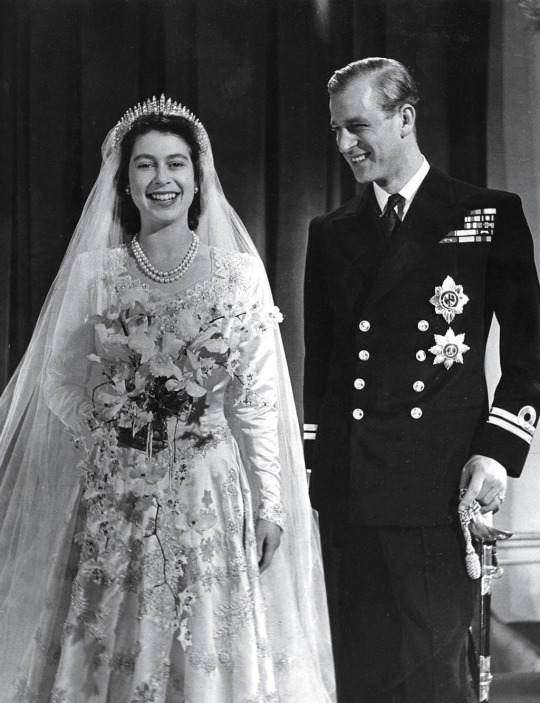
Years later, in 1994, Prince Charles would allow his authorized biographer to disclose that the prince felt “emotionally estranged” from his parents. Close friends found the Duke’s behavior “inexplicably harsh” and called his manner toward Charles “very bullying.” His mother, the Queen, seemed “detached.” Elizabeth and Philip were reported to be hurt by this disclosure. Publicly, only Philip would comment: “We did our best.” Princess Anne exercised less restraint, defending Elizabeth from rumors that she was remote. “I simply don’t believe that there is any evidence whatsoever to suggest that she wasn’t caring,” she said in 2002. Yet even Anne might have acknowledged a warmth that was sometimes wanting on her part later in life—when a little more compassion, a little more kindness, might have been called for.
The early 1990s would bring all kinds of personal problems to the fore—most notably in 1992, which the Queen famously described in a speech as an “annus horribilis” (horrible year). This was the year when her second son, Andrew, separated from his wife Sarah; when daughter Anne divorced her husband Mark Phillips; when her son Charles and his wife Diana increasingly became a tabloid issue; and when public concern grew about the cost of the monarchy and who would pay to repair Windsor Castle, which caught fire that year.
The damage was significant. The Nov. 20 fire—on the Queen’s 45th wedding anniversary—gutted the northeast corner of the castle, parts of which were more than 900 years old. It took 250 firefighters 15 hours to bring it under control. In the end more than 100 rooms, covering an area of 1.7 acres, were damaged. When British citizens learned that they were about to foot the bill for repairs to Windsor Castle—to the tune of up to $78 million—they grumbled. Elizabeth rectified the issue by volunteering to pay income and capital gains tax from her private investments. It hurt, but not too much: Her net worth remained at about $500 million.
But these were simply matters of state. Matters of the heart caused greater grief for Elizabeth—particularly the travails of Charles and Di. Their courtship and 1981 marriage captivated the nation, if not the world. No less an authority than the Archbishop of Canterbury proclaimed, “Here is the stuff of which fairy tales are made: the Prince and Princess on their wedding day.” But infidelity would intrude on both sides, and the ability to maintain the pretense of marriage for the sake of appearances became impossible. On Aug. 24, 1992, the transcript of a phone conversation between Diana and a close friend was published in the Sun, with Diana describing life with Charles as “real torture,” and saying she had caught the Queen Mother watching her “with a strange look in her eyes.” Diana and her young sons, William and Harry, continued to reside at Kensington Palace, while Charles’ relationship with Camilla Parker Bowles was parsed by the tabloid press. The Prince and Princess of Wales officially separated on Dec. 9.
Diana’s decision to grant an interview to the BBC on Nov. 20, 1995, in which she confessed that she had been unfaithful to Charles, had upset the royal family, and Queen Elizabeth in particular. (Of course, Charles had admitted his own infidelity on a TV documentary the previous year, as Diana noted in the interview.) Within a month, the Queen wrote to both Charles and Diana, urging them to agree to an early divorce. Buckingham Palace released a statement saying Charles favored the divorce, but there was no official word from Diana. In February 1996—more than a year before Diana, her romantic partner Dodi Fayed, and driver Henri Paul died in a car crash while being pursued by the paparazzi—she finally released her own statement saying she was ready to divorce too.
It took time for Elizabeth—a woman married seven decades to the same man—to adjust to modern mores. A longtime sticking point was Charles’ future bride Camilla; the press noted that Elizabeth was not enamored of her son’s consort. A shift occurred in 2002, when, by bringing Camilla to events celebrating Elizabeth’s 50 years on the throne, Charles provided strong evidence that he was gaining ground in his campaign to officially bring Camilla into the family fold.

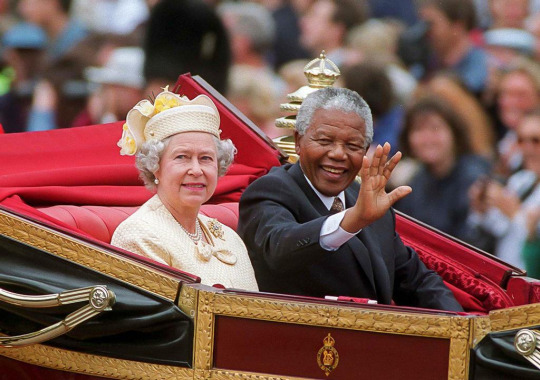



Charles and Camilla got engaged around Christmas 2004, and before long the Queen issued a statement saying, “The Duke of Edinburgh and I are very happy that the Prince of Wales and Mrs. Parker Bowles are to marry.” She and Prince Philip did not attend their wedding at Windsor Guildhall on April 9, 2005, but they did attend a blessing of the couple at St. George’s Chapel in Windsor Castle and held a reception for them at the castle.
A more festive wedding—and one more in keeping with Elizabeth’s sense of tradition—took place on April 29, 2011, when Elizabeth’s grandson William married Kate Middleton in a lavish ceremony at Westminster Abbey. And she remained her regal self at Prince Harry and Meghan Markle’s more modern wedding at Windsor Castle in 2018, which included a fiery sermon delivered by Bishop Michael Curry of Chicago, the first African American head of the Episcopal Church in the U.S.
But in a televised interview with Oprah Winfrey in March 2021, Harry and Meghan alleged that racism had tarnished their relationship with the Windsors. While the press hounded Meghan as they did Harry’s late mother, “no one from my family ever said anything,” Harry said.
The family was once again thrust into the spotlight when allegations surfaced about Andrew’s relationship with the late sex offender Jeffrey Epstein. Andrew stepped back from royal duties in late 2019, and in 2021 was served with a lawsuit by Virginia Giuffre, one of Epstein’s victims, who accused Andrew of sexually abusing her when she was 17. According to the Daily Telegraph, the Queen contributed millions to her son’s legal defense, and agreed to contribute £2 million ($2.7 million) to a survivor-support charity as part of a settlement.
But family was also a source of comfort. As the Queen neared the end of her life, she doted on her grandchildren and great-grandchildren. “In a small room with close members of the family, then she is just a normal grandmother. Very relaxed,” Harry said before he and Meghan stepped back as working royals in early 2020. “She obviously takes a huge interest in what we all do.”




EVEN AFTER SHE ENTERED her ninth decade, Elizabeth continued with her royal duties, despite her age and a rapidly changing world.
For nearly all her reign, the Queen would read a selection of the 200 to 300 letters that she received daily, as well as review official papers and documents sent her way from government ministers and her representatives in foreign countries. Until she was forced to slow down by mobility issues and bouts of ill health, she would have 10- to 20-minute audiences with ambassadors, commissioners, and other officials, and there would be her weekly visit from the British Prime Minister.
Despite growing republican movements within the Commonwealth realms, the Queen herself remained a hugely popular figure in both the U.K. and beyond. And she remained a force for good, offering messages of inspiration and optimism in even the most trying times. In one of her last annual Christmas Day messages, she urged her subjects in Britain and across the Commonwealth to draw inspiration from “ordinary people doing extraordinary things.”
To many, she embodied the steadfastness she urged in others. At Prince Philip’s funeral, held shortly after he died on April 9, 2021, after 73 years of marriage, the monarch solemnly sat alone in a pew at Windsor Castle because of coronavirus restrictions. The image became instantly iconic, and further burnished her legacy as a stoic leader through good times and bad.
The Queen has been a constant figure in most of the British public’s living memory. Difficulty moving prevented her from attending the majority of Buckingham Palace’s Platinum Jubilee celebrations, as the nation in June 2022 marked her 70th year on the throne—a first for a British monarch. But community celebrations were widespread across the U.K. Some 16,000 official street parties were organized, and almost 17 million people—about 1 in 4 Brits—took part in events.
The Queen did not lead an ordinary life, but she filled it with inspiring acts of duty both public and private—whether carrying out the requirements of the state from the trappings of the throne, or giving quiet words of encouragement to a well-wisher in a crowd. She “has been a rock of stability in an era in which our country has changed so much,” said Britain’s former Prime Minister David Cameron. “And we could not be more proud of her. She has served this country with unerring grace, dignity, and decency.” —With reporting by ELOISE BARRY, KATHY EHRICH DOWD, MADELINE ROACHE, and YASMEEN SERHAN

PHOTOGRAPH BY © CECIL BEATON—VICTORIA AND ALBERT MUSEUM, LONDON
TOPICAL PRESS AGENCY/GETTY IMAGES
1956: INTERCONTINENTALE—AFP/GETTY IMAGES; 2019: PA WIRE/AP; SUCCESSION: GETTY IMAGES (13)
1941: LISA SHERIDAN—STUDIO LISA/GETTY IMAGES; 1945: MIRRORPIX/GETTY IMAGES
1947: HISTORIA/SHUTTERSTOCK; 1961: FOX PHOTOS/GETTY IMAGES
LEFT TO RIGHT, FROM TOP LEFT: JULIAN PARKER—UK PRESS/GETTY IMAGES; GEORGE SKADDING—THE LIFE PICTURE COLLECTION/SHUTTERSTOCK; UNIVERSAL HISTORY ARCHIVE/GETTY IMAGES; TOM STODDART—GETTY IMAGES; GAMMA-KEYSTONE/GETTY IMAGES; TIM GRAHAM PHOTO LIBRARY/GETTY IMAGES; BETTMANN ARCHIVE/GETTY IMAGES; JANE BARLOW—POOL/AP
PHOTOGRAPH BY MAX MUMBY—INDIGO/GETTY IMAGES
29 notes
·
View notes
Text

(very long post beneath the cut. This will only go up to 2018 because her current timeline as of writing is a mess. The details are a combination of events from previous runs and the current timeline being used as of 2015)
1928: Natalia Romanova is born in the winter in Stalingrad to an impoverished mother. During a raid by imperialists, their house is set on fire and her mother hands her baby over to Ivan Petrovich Bezukhov, before her mother is killed.
1938: Natalia has been taken in by Ivan as his foster daughter. One winter afternoon in a park, Ivan and Natalia meet Taras Romanov. Ivan gives her custody to Taras so Ivan can go on military leave. She is taken to a training facility in Moscow and is now his "daughter".
1940: Natalia, now age twelve, meets Logan Howlett, a soldier from Canada. As they train in martial arts, they develop a friendly, familial relationship. She even calls him "little uncle" in Russian (маленький дядя). Logan kills Taras and Natalia escapes, living in the forest alone. Ivan finds her three months later and takes her back into his care.
1943: Natalia signs up to join the military to aid with the war effort, despite being only fifteen years old. She meets a fellow soldier in her unit named Nikolai, who's sixteen, and they fall in love.
1944: Natalia and Nikolai are now "married", and are secretly expecting a baby that's due soon. One evening, their unit is ambushed by Germans and they take cover in the woods. Nikolai is soon shot dead, and Natalia is forced to leave him to get to safety. Natalia eventually goes into labor while in Slovakia with Ivan, but manages to get to a midwife's house in the Doborčský Forest. She eventually gives birth that night to a baby girl with the assistance of the midwife and her daughter, but the baby is stillborn. Natalia names her Rose.
1945: The war is won and a seventeen year old Natalia goes back to civilian life. She soon graduates high school. Natalia enters the Bolshoi Theater as a professional ballerina, having been dancing ballet there her entire childhood.
1956: Natalia, now twenty eight, finds a severely injured Ivan, who has been shot by gang members. A brainwashed James Buchanan Barnes (who had been kidnapped by the Soviets in 1945) gives them the option to take a limited "chemical" that heals his wounds and grants eternal youth. Despite Ivan's protest, Natalia consents for the both of them. She soon starts her training in the Red Room, along with 27 other women. Natalia is trained by James in hand to hand combat and they start a secret sexual relationship.
1957: Natalia is given medals for her time in the war and meets Alexei Shostakov, a Soviet Air Force pilot. They get to talking and he is told she's in training to be a secret agent. Due to Natalia's popularity for being a famous ballerina, and Alexei's status as a Hero of the Soviet Union, they are encouraged to marry.
1962: Natalia joins the Russian special forces while going through her Red Room training. She is given a job to kill the defecting Comienzas in Cuba, as well as a fellow Red Room trainee named Marina. Natalia completes the mission. She soon earns the title of the Black Widow, and the Red Room is disbanded. She and her husband Alexei then work as KGB operatives.
1963: Alexei, due to him being offered the super soldier serum and the title of the Red Guardian (the Soviet's answer to the patriotic hero Captain America), has his death faked and his wife Natalia is lied to by the KGB. Instead of immediately grieving, she declares to get revenge on the West, deciding to put her country before her own well being.
1991: The Soviet Union falls on December 25th, Gorbachev resigns as President and Russia becomes one of the fifteen independent states. Natalia still sides with Russia, but is now an independent mercenary. She and Ivan travel to different countries to perform "job offers", earning money from them at the same time.
2005: On an assignment to spy on Tony Stark in America, Natalia flirts with him and they routinely meet up with each other at her mansion by the water. He's well aware of what she's doing.
2006: Natalia starts a relationship with Clint Barton, and later defects from Russia. This new life in America annoys Ivan.
2007: She begins to live as a vigilante after being inspired by Peter Parker, and sews herself her own suit.
2008: The Avengers are formed and Natalia joins SHIELD.
2009: Natalia eventually joins the Avengers, along with Clint Barton, and twins Wanda and Pietro Maximoff. Much to her shock, she learns that Alexei is alive and well on a mission. They soon divorce.
2010: Natalia moves to San Francisco, starts dating Matt Murdock, and tries to get into fashion design. Ivan gets fed up with life in America and they go separate ways, with him cruelly telling her he never wanted to be her father in the first place.
2013: Wanda Maximoff has a breakdown following the deaths of her sons and the Avengers split up. Natalia moves to Arizona. She's told by a former SHIELD agent that the remaining 26 Red Room trainees from her generation have been murdered by the Northern Institute.
2014: James Buchanan Barnes is freed from his Winter Soldier brainwashing and eventually gets together with Natalia officially, living life as Bucky Barnes. Natalia later encounters Yelena Belova, a woman who has become the next Black Widow after going through the training from a recreated Red Room Academy.
2016: Natalia is on the pro-registration side of the Superhuman Registration Act.
2018: Ivan is killed during a phone call with Natalia. She goes to Russia to identify his body. She learns of the Icepick Protocol and takes care of it. She is now living her life as a freelance spy and assassin.
2 notes
·
View notes
Text

The Ghosts of Hershey Park
The park officially opened on April 24, 1907 and in its early days, was not much more than a nice place to have a picnic and go boating. It was created by Milton S. Hershey as an outdoor recreation area for employees of his candy factory. Over the years, additional attractions were added, including a swimming pool complex, amphitheater, and rides. In the early 1970s, HERCO pushed for the expansion of the property as a modern day theme park with a one-price admission for total access.
Over its long history, the park has definitely picked up its fair share of ghost stories. Here’s just a few of those tales!
Milton Hershey
The ghost of founder, Milton Hershey is said to roam the grounds of his park, keeping an eye on this aspect of his chocolate empire. Although a few witnesses have claimed to actually SEE Mr. Hershey’s apparition after park hours, this is one ghost that is usually smelled, and not seen. A phantom smell of cigar smoke is said to indicate Mr. Hershey’s ethereal presence.
“The Carrousel”
Every amusement park needs a carousel…and a haunted one is even better! The current carousel at Hershey’s is actually the park’s third. A year after the park opened, Milton Hershey decided to allow the public to enjoy it as well and added a used carousel for the enjoyment of his guests and employees. It quickly became a hit, and in 1912, a larger carousel was installed and operated until 1944. That year a new carousel was purchased, but due to a shortage of park funds, an older, used model was picked out.
That carousel was the Philadelphia Toboggan Company #47 Carrousel (notice the two ‘r’s). Built in 1919, the carousel began its career at Liberty Heights Park in Baltimore, where it remained for ten years. Then, it moved to Enna Jetta Park in New York before it was purchased in 1944 by Hershey Park. The theme of the carousel is one of understated patriotism. Beautifully carved eagles, flags, and Lady Liberty are sprinkled throughout the artwork of the ride as a tribute to the end of WWI in 1918–the war to end all wars. It was quite fitting that it would arrive at Hershey Park in the last days of WWII.
Today, the carousel is famous for being one of the spookiest places in the whole park! Originally installed near Spring Creek, it was moved to Founder’s Circle in 1972. Since then, park personnel have seen the carousel’s lights turn on by themselves, and the ride eerily start to turn without a living soul nearby. The music coming from its Wurlitzer organ begins to drift through the park, all under the command of an unseen operator. Well, mostly unseen. There is one story where a security officer was doing his rounds, when he noticed the lights of the carousel turned on. He turned them off and began to walk away, but the lights flipped themselves back on. As the officer turned back around towards the ride, a shadowy figure of a person sitting near the controls was seen. By the time the officer actually reached the ride, the mysterious figure was gone.
The Lighthouse
The original swimming pool complex of Hershey Park was completed in 1911 and lasted until 1928. The following season, a new swimming complex, complete with a concrete island lighthouse, was opened. The pools were filled in during the 1971 season and all that remains as a reminder of those years gone by is the lighthouse near the front of the park….that, and the ghosts. Over the nearly half a century that the pools were in operation, several children unfortunately drowned in their waters. The spirits of those children have been seen near the lighthouse wearing their old-fashioned swimwear, oblivious to the changes made by time.
The Sooperdooperlooper Rollercoaster
The 1977 season of Hershey Park opened with the addition of a brand new thrill ride: the Sooperdooperlooper rollercoaster! However, the ride seemed cursed from the very beginning. On its opening day on July 4th, 1977, the ride experienced a mechanical failure, stranding passengers, including Hershey’s CEO and other VIPs, on the hill lift. No one was hurt, but passengers were forced to walk down the narrow catwalks to safety. Unfortunately, it would be only a month later when someone WOULD get hurt.
William Harter was a 16 year old high school student working at the park as a maintenance man as part of a summer vocational program. On August 25th, Harter was removing some bolts from a magnetic control device designed to stop the train. Standing between the rails with his back toward the train, it suddenly started moving and ran over him. Since the incident, many security guards, maintenance personnel, and other employees in the park after dark have seen the shadowy figure of a young man standing or walking along the rails of the coaster.
Boardwalk
The tale of the Lady of the Boardwalk can be found in Christopher Wolfe’s book, Ghosts of Hershey and Vicinity. Apparently, when the park began its huge expansion project in the 1970s, several nearby private properties were purchased. One elderly lady who was a long-time resident did not want to sell her beloved home, yet felt she had no choice. Instead of giving in, she killed herself in her own attic. The area where the house once stood is located across from the Kissing Tower and is home to several shops, including Boardwalk Fries. In fact, it is believed that part of the original house does still stand, renovated into the strip of shops here. Employees of the establishment have heard the moaning and wailing of a woman, most notably coming from the second story of the building.
#The Ghosts of Hershey Park#parnormal#paranormal phenomena#ghost and hauntings#ghost and spirits#haunted locations#myhauntedsalem#haunted salem
13 notes
·
View notes
Text
The railway lines on Seidrey are the Gunnigrind & Tarfalam Line, Ben Fisag Branch, & Kirktobaness Light Railway, and the Tarfalam, Chraig, & Laughof Railway
The stations along the railways (and their Scots Gaelic translations
Main Line
Mainland from Wilkhaven, connecting to the Far North Line at Fearn
Tarfalam (Tarsainn Falamh)
• Tarfalam Chraig & Langhof Railway
Dochas (Dóchas)
Lubadmore (Lùbadh Mòr)
• Dairy
Gunn Castle (Caisteal Guinnich)
• Kirktobaness Light Railway
• Guinnich Brewery
Tradham (Ag Ionaltradh Neamh)
• Farm
Samchair (Sàmhchair mu Dheireadh)
Gunnigrind (Port O' Guinnich)
• Ben Fisag Branch
• MOD
• Main Shed
• Port/Fishing
•Stewart's Holiday Camp
Kirktobaness Light Railway
Gunn Castle (Caisteal Guinnich)
• Mainline
• Guinnich Distillery
Kirktobaness (Caisteal ri Taobh an Eas)
Ben Fisag Branch (Beinn Phiseag)
Gunnigrind (Port O' Guinnich)
• Mainline
• MOD
• Main Shed
• Port/Fishing
• Holiday Camp
Bailanns (Bhaile Anns na Beanntan)
• Bailanns Distillery
Gemsted (Áite Falaich)
• Game Lodge
Hörgr (Aoradh)
• Stone Quarry
Tarfalam, Chraig, & Langhof Railway
Tarfalam (Tarsainn Falamh)
• Mainline
Chraig Castle (Caisteal Air a' Chreig)
Mountain Farms
Laughof Central (Bath Earrach Teth)
• Stewart's Hot Spring Resort
• Laughof Academy
Laughof Main Street
Hiking Hault
Bonniebear (Bonn na Bearraidh)
• Fishing Town
The History
In 1868 the Tarfalam & Gunnigrind Railway was formed, and started construction from the Sutherland Railway station at Fearn, crossing the water from the mainland at Wilkhaven to the island at Gunnigrind. Construction was finished in 1874. It was absorbed into the Highland in 1884 (they were already providing services along the line), the same time as the Sutherland, Duke of Sutherland Railway, and Sutherland & Caithness Railway.
In 1890 the Highland built the branch up to Aoradh and double tracked the entire line from Inverness to Gunnigrind, strengthening the line more than they would ever need (end enough for the LMS to even run Pacifics on it in the 30s).
The Kirktobaness Light Railway started construction in 1900, and was opened in 1902, a part of the Highland, but heavily subsidized by the chief of Clan Gunn at the time. Despite the station name of Gunn Castle, the actual castle was around 7 miles away at Kirktobaness, so a light railway was built out to it. The railway had bypassed it in the beginning due to the 1 in 45 gradients required to the town and castle
In 1915 a naval base was constructed at Gunnigrind.
In 1923 the Highland railway was grouped into the LMS, however other than a new coat of paint, the roster didn't change much. The line, like most of the surrounding lines, was given the shed code 32A.
In 1928 a Gunnigrind local and millionaire, Roger Masters, took a visit to Kent and became infatuated with the the Romney, Hythe and Dymchurch Railway, and decided he wanted to bring such small charm to Seidrey. He got his friend Emmett Stewart in on the action, and next year a Light Railway Order was applied for and granted for a fifteen inch gauge line from Tarfalam to the hot springs at Laughof, and in 1930 construction began on the Tarfalam, Chraig, & Laughof Railway (they also stole the locomotive designer, Henry Greenly, from the RH&DR in March 1929). The railway was opened in 1931 from Tarfalam to Laughof. The railway helped build Mr. Stewart's hot springs spa and resort at Laughof, and then bring passengers to it. It also had sidings at the local farms to haul wool to the mainline.
In 1929 the LMS started testing 6299 Fury on the line and due to it's early faults, a year later a new express locomotive arrived, Royal Scot class 6168 The Girl Guide
Other engines started to arrive through the years, including Patriots, moguls, 8fs, Stanier red and black 5's, a Pacific, 6204 Princess Louise, and even the Turbomotive.
In 1937 the TC&L was extended to the seaside town of Bonniebear. Fish trains were attempted, to surprisingly moderate success.
During the war, the naval base got a lot of traffic, and an Austerity tank, a WD 2-8-0 and two 2-10-0s were moved to the region, and stayed, even after the war.
The 2-10-0s were absolutely crucial on the Ben Fisag Branch, as the rails at the stone quarry past Hörgr were so light that none of the LMS built engines assigned to the region could run on them, so they were being run by increasingly tired HR locomotives until the 2-10-0s showed up.
One oddity about the Gunnigrind & Tarfalam is it is a near perfect microcosm of the WCML, so experimental locomotives were sent here for trials. In December 1947 this was the case for 6256 Sir William A. Stainer, F.R.S. and 10000, who found their homes here (almost all LMS and LMS ordered experimental diesels also found their home here). Because of this, the Gunnigrind sheds had a heavy maintenance sheds for diesels, always stocked with parts for the sometimes temperamental LMS diesels.
BR's takeover once again didn't change much at first, only a few BR standard class 5 and 6s showed up. The shed code was changed to 60F
However, in 1966, the Benching Axe fell for both the Kirktobaness Light Railway and Ben Fisag Branch, as standard classes of diesels took over the island.
Named Passenger Trains and their stops
The Black Wolf (Sleeper Train) (Hauled by Royal Scots, Rebuilt Patriots, or Pacifics)
Gunnigrind
Tarfalam
Perth
Stirling
Glasgow Buchanan Street (later Queen Street)
Symington Junction
Carlisle Kingmoor
Preston
Crewe
Stafford
Rugby
London Euston (from 1966-1981 Kensington Olympia)
Glasgow Highlander (Hauled by Patriots or Jubilees)
Gunnigrind
Tarfalam
Perth
Dunblane
Stirling
Glasgow Buchanan Street (later Queen Street)
Edinburgh Highlander (Hauled by Patriots or Jubilees)
Gunnigrind
Tarfalam
Perth
Dunblane
Stirling
Falkirk Grahamston
Edinburgh Princes Street (later Edinburgh Waverly)
Aberdeen Highlander (Hauled by Patriots or Jubilees)
Gunnigrind
Tarfalam
Keith
Aberdeen Joint
Seidr Pullman / Seidrian (Runs opposite days) (Hauled by Royal Scots, Rebuilt Patriots, or Pacifics)
Gunnigrind
Tarfalam
Perth
Stirling
Glasgow Buchanan Street (later Queen Street)
Symington Junction
Carlisle Kingmoor
Workington
Whitehaven
Barrow-in-Furnesa (Engine Change to NWR)
Crovan's Gate
Tidmouth
The Spa Express
Tarfalam
Laughof
Preservation
A large amount of steam locomotives from this line survived. When withdrawing old HR engines, the railway liked to donate one of a class to a village along the line. Once this was unreasonable, Roger Masters, the Creator of the Tarfalam Chraig & Langhof Railway, created a "scrap yard" where he could store engines.
In 1948, the Guinnich Distillery purchased the HR Clan class locomotive 54765 Clan Stewart (the express engines of the line until 1930, and which has been retired in 1945) as well as the wooden Pullman coaches that ran the Seidr Pullman to use as a display and diner/bar.
When the LMS express engines were retired, they were put on display, some at the Gunnigrind Resort, some others at the Butlins Ayr resort.
In 1966, when the Ben Fisag Branch closed, preservationists, led by Mr. Masters, managed to come up with enough money to buy the branch and all locomotives that served it and the two tank engines that ran the Kirktobaness Light Railway, creating the Ben Fisag Railway.
In 1968, they also purchased the (at that point disused) Gunnigrind engine facilities, retrofitting the diesel works so they could also maintain their steam engines, and started restoring some of them to operation. They started purchasing the Highland Railway locomotives on display around the island, restoring them to operating condition.
In 1971 the train bought by Guinnich Distillery was restored at the works for operation, now that the distillery could do an actual running dinner train on the mainline.
Throughout the 1980s, the engines that had been displayed at holiday camps were purchased back by the museum and trust for mainline use.
All names and history are subject to change as I figure more working solutions, this is a living story.
#Seidrey#trains#this is a massive thing sorryyyyy#but im passionate#vaguely ttte#anyone who speaks scots gaelic i am sorry i dont and am having to use google translate#lore
2 notes
·
View notes
Text
Just an average daily Polskie Radio broadcast from 1928. This cross-section of the interwar social project throws my head into a tailspin??? You’ve got your daily Military Updates (”The Polish Solider in This Day & Age”); a lecture on the Dalton system (novel pedagogy based on individual learning, one of many methodologies that emerged from the ferment at the turn of the 20th century and the overwhelming drive toward educational reform & radical reconstruction/reimagination of schooling as such)--this is sponsored by the ministry of education and religion, by the way! (Yes, in the II RP religion and education are under one umbrella); Farming Bulletin; a French language lecture (!!!); a history lecture on the youth of August II der Starke, 17th-century governor of Saxony (and as Miłosz pointed out, duh, king of Poland, much more important, I am dumb of ass lol) (!!!!!); and to wrap up the evening, a live concert dedicated to the works of Chopin. There’s a lot of music mixed in, sports, news sprinkled here and there, it’s designed to be a blend of public-access education (they played it in factories--installing radio towers where the ~industrial proletariat could have entertainment and ~enrichment was a high priority!), culture, Polish patriotic propaganda, and obviously...fun. Following in my grandpa’s footsteps and becoming a Radio Guy really fast lol

#interwar polish radio tag#wish my grandpa were alive so i could ask him to teach me about this shit#but he did leave me all his ham radio stuff when he died & there is SO much ham radio stuff#fun fact he avoided being cannon fodder in WWII because he was so autistic about radios they made him#a radio engineer and after the war he got a job as also a radio engineer on the back of his 'i got drafted into the army &#all i got was 'being out of my hometown when the nazis liquidated it & an excuse not to work at the same factory as my dad''#thing
10 notes
·
View notes
Text
THIS DAY IN GAY HISTORY
based on: The White Crane Institute's 'Gay Wisdom', Gay Birthdays, Gay For Today, Famous GLBT, glbt-Gay Encylopedia, Today in Gay History, Wikipedia, and more … January 15


1622 – On this date the French playwright Jean-Baptiste Poquelin, better known as Molière was born (d.1673). Considered the greatest writer of French comedy, among Molière's best-known works are Le Misanthrope (The Misanthrope), L'École des femmes (The School for Wives), Tartuffe ou L'Imposteur, (Tartuffe or the Hypocrite), L'Avare (The Miser), Le Malade imaginaire (The Imaginary Invalid), and Le Bourgeois Gentilhomme (The Bourgeois Gentleman), and many other masterpieces of Commedia dell'arte.
Martin Greif writes that when Molière was in his late forties he fell in love with Michel Baron and brought him home to live with him. When the playwright's wife protested Baron moved out till Molière ordered him back. When his wife made an ultimatum that the playwright choose between her or Baron, Molière chose. Three years later in 1673, when Molière died, Michel Baron was at his side.


1893 – On this date British musical comedy performer David Ivor Davies, better known as Ivor Novello was born in Cardiff, Wales (d.1951). He became one of the most popular British entertainers of the first half of the 20th century.
Born into a musical family, his first successes were as a songwriter. He served in World War I, first as an entertainer in France, then as a pilot in the Royal Naval Air Service. During the war he composed scores for several musical comedies, but his biggest hit came with the patriotic song "Keep the Home Fires Burning" (1914).
After the war, Novello contributed numbers to several successful musical comedies and was eventually commissioned to write the scores of complete shows. In the 1920s, he turned to acting, first in films and then on stage, with considerable success in both.
Novello debuted on stage in London in Deburau (1921). He then starred on screen in Carnival (1921), The Bohemian Girl (1922), The Man Without Desire (1923), and D. W. Griffith's The White Rose (1923).
A homosexual with no desire to become a family man, Novello thrived professionally in multiple careers. His stint as playwright, and frequent actor of his own words, took off in 1924 when he wrote and performed in The Rat. Back on screen, he acted against type, playing a psychopath in Alfred Hitchcock's The Lodger (1926).
Other screen credits include The Vortex (1927), from a Noël Coward play; Downhill (1927), again for Hitchcock; and The Constant Nymph (1928). These were followed by stage runs of Symphony in Two Flats (1930), The Truth Game (1930), and I Lived with You (1932).
The press linked him romantically to Bohemian Girl co-star Gladys Cooper, but the real love of his life was actor Robert "Bobbie" Andrews, with whom he lived from 1917 until his death in 1951.
It seems everyone except the millions of women who swooned over the star knew he was gay. Novello was well-known for some of his more glamorous gay affairs. For 35 years, he was the lover of Bobbie Andrews, and he had an affair with the British poet and writer Siegfried Sassoon. Winston Churchill has admitted having a one night stand with Novello.
His sophisticated and urbane social circle was peopled with leading homosexuals in the arts, including Noël Coward, Clifton Webb, and Somerset Maugham.
It is likely that the open secret of Novello's homosexuality played a part when a notoriously homophobic judge sentenced him to a month's imprisonment during World War II for evading wartime restrictions on the use of gasoline.
In 1931, Novello went to Hollywood and co-wrote several film scripts, including Mata Hari (1931) and Tarzan, the Ape Man (1932), but he preferred the theater to movies.
Ivor Novello died on March 6, 1951 from coronary thrombosis in London just four hours after appearing in a performance of The King's Rhapsody, a play he wrote. He was 58.

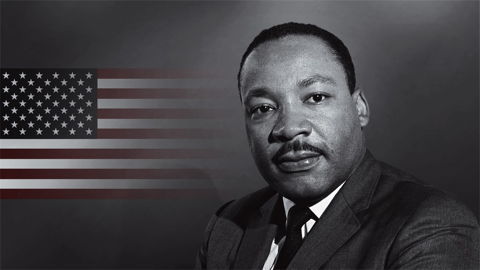
1929 – On this date in 1929 Martin Luther King, Jr was born in Atlanta, Georgia (d.1968). As an African American civil rights leader he spoke eloquently and stressed nonviolent methods to achieve equality. He received the Nobel Peace Prize in 1964. He was assassinated in Memphis, Tennessee, on April 4, 1968. In 1983, the third Monday in January was designated a legal holiday in the U.S. to celebrate his birthday. King's message was a catalyst for many in the gay rights movement and continues to be an inspiration for the GLBT community today.
African American civil rights activist Bayard Rustin, who had studied Gandhi's teachings, counseled King to dedicate himself to the principles of non-violence, and served as King's main advisor and mentor throughout his early activism, and was the main organizer of the 1963 March on Washington. Rustin's open homosexuality, support of democratic socialism, and his former ties to the Communist Party USA caused many white and African-American leaders to demand King distance himself from Rustin. When Congressman Adam Clayton Powell threatened to accuse Rustin and King of having a homosexual affair. King gave in to Powell, and Rustin resigned from King's staff. Rustin was devastated by Powell's ruthlessness and by what he saw as King's betrayal, though he continued to advise King, and they rmained friends and allies until King's assassination.


Zak Spears Then
1965 – Zak Spears is an American gay pornographic film actor. Spears appeared in the feature film The Doom Generation (1995) using his real name, Khristofor Rossianov.
Spears was born Khristofor Lawl Rossianov in Chicago, but his German Catholic family also lived in Rochester and Minneapolis, Minnesota. He has two older brothers, one younger brother, and two older sisters. He came out to his family when he was 12, and at school when he was 16. He was constantly ridiculed with gay epithets as a result, and so he withdrew from all social circles.
After school, Spears worked as a diesel mechanic in Chicago and Minneapolis, and caught flak from the blue-collar men he worked with for being gay.
A friend took Spears to a bar called The Saloon in Minneapolis where Chi Chi LaRue was doing a show, and introduced them. Spears and LaRue became fast friends, and LaRue used him for a video called Handjobs 3 (1993). From there, Spears took off in the gay adult industry.In 1996 Spears retired from the gay adult industry after falling in love with Matthew Rush, who would also go on to star in gay adult films. Spears had hoped the relationship would be long-term, but after they broke up, he bulked up with a lot more muscle and returned to the industry in 2004.
Initially retiring from the industry in 1996, he made a return in 2004 in the film Zak Attack, sporting a dramatic image change which included a shaved head and a much bulkier build.

Zak Spears Now
Spears also appeared in the black comedy feature film Forgiving the Franklins (2006) under the name Khris Scaramanga. The film's director, Jay Floyd, said that having Spears in his film helped raise its profile. "I have one star in my movie," Floyd told The Los Angeles Times. "He just happens to be a porn star."

1968 – The Virginia Supreme Court rules that merely placing the mouth on a penis does not violate the state's sodomy law.

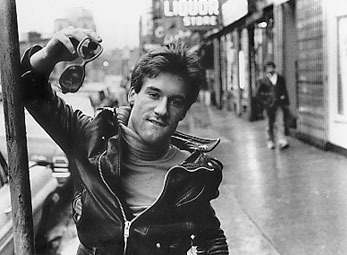
1973 – On this date Lance Loud came out on the PBS "series" An American Family. He bears the distinction of being the first person to come out on US national television.

1973 – The New York Division of Motor Vehicles banned "offensive" license plate combinations, including "DYK" and "FAG."

1975 – On this date The Vatican released its "Declaration on Certain Questions Concerning Sexual Ethics" which includes a definition of homosexuality as "a serious depravity."


8 notes
·
View notes
Text
scandalous star: james stewart - an analysis
“I take a simple view of life: keep your eyes open and get on with it.” - Jimmy Stewart
Simple words from a simple man. For many years, James Stewart was the prototypical Taurus: a reliable, solid, principled, good-natured everyman, immortalized on screen. He was best known for playing frustrated businessman George Bailey in one of my all-time favourite Christmas films, It’s A Wonderful Life. He endeared himself to generations of film lovers with his portrayals of noble, idealistic, yet often conflicted characters that prevailed against the most daunting of odds. In a career that spanned five decades, Stewart played real-life heroes and ordinary people, pioneers, lawmen, cowboys, military officers, politicians, businessmen, reporters, fools and wise men. On the screen, Stewart had a presence that was self-effacing and modest. He could be engagingly awkward, and he sometimes spoke his lines with a slight stammer, but he was lovable and sincere. Stewart was the cinematic epitome of common sense and decency. He was the proverbial boy-next-door. His style of acting seemed effortless and natural, and he established an easy rapport with his audiences. Stewart, as ordinary as he seemed, was anything but, because his blank-canvas persona ran the gamut, encompassing the furthest extremes of American masculinity, from Reaganite militarist patriotism to Hitchcockian perversity. However, his feet were not made of clay; Stewart, for better or worse, never relinquished his small-town America roots. A true Taurus, Stewart preferred the status quo and any move to alter it, whether through championing co-existence, even feminism, caused him extreme concern. In 1971, it was alleged that he wanted a black actor fired from his show because he didn't think it would be appropriate for a black character to be ordering him around on television with a family audience watching. Still, Stewart remains a figurehead of the good (and not so good) of mid-century America.

James Stewart, according to astrotheme, was a Taurus sun and Capricorn moon. He was born the eldest child and only son in a small town in Pennsyvania where his family had operated a hardware store since the middle of the 19th century. He was of Scottish and Scotch-Irish ancestry. A shy child, Stewart spent much of his time after school in the basement working on model airplanes, mechanical drawings and chemistry—all with a dream of going into aviation. His father hoped Stewart would take over running the store as an adult after attending Princeton University, as was the family tradition. Stewart began attending prep school in fall 1923, because his father did not believe he would be accepted into Princeton (his father was a member of the Class of 1898) if he attended public high school. Stewart enrolled at Princeton in 1928 as a member of the class of 1932, majoring in architecture. After college, Stewart spent the summer on Cape Cod with a theater group known as the University Players, directed by Joshua Logan. He won a minor role as a chauffeur in a pre-Broadway tryout of a show. In that role, Stewart was on stage for only three minutes, and he had one line, but he managed to put enough effort and vitality into his performance to impress both the audiences and visiting critics from New York. Over the next three years, he appeared in a variety of Broadway productions; then, in 1935, a Metro-Goldwyn-Mayer talent scout persuaded the studio to offer him a part in a movie called "Murder Man." He was not pleased with his performance. Nevertheless, it was enough to launch his motion picture career. He made 24 films during his first five years in Hollywood, including some of his best. Among them was the Capra film You Can't Take It With You, which won an Academy Award for best picture in 1938.
Early in 1941, with World War II already underway in Europe, Stewart tried to enlist in the Army. Initially, he was rejected for being underweight, but he fattened himself with a deliberate and aggressive eating campaign and eventually was accepted for military service. Already a licensed airplane pilot, he was assigned to the Army Air Corps, where he became a bombardier instructor. In 1943, he went to Europe as commander of a bomber squadron in the Eighth Air Force, and he flew 25 combat missions. He returned to the United States in 1945 as a colonel whose decorations included a Distinguished Flying Cross with oak leaf cluster and an Air Medal. In 1949, Stewart married Gloria Hatrick MacLean. Stewart remained in the Air Force Reserve after the war and in 1959 was promoted to brigadier general. In 1966, during his annual two weeks of active duty, he requested a combat assignment and participated in a bombing strike over Vietnam. A staunch Republican, a political argument in 1947 reportedly led to a fistfight with friend Henry Fonda, according to some accounts, but the two maintained their friendship by never discussing politics again. Resuming his film career after World War II, Stewart faced a midlife crisis of confidence. His initial postwar films perpetuated the image of youthful innocence and hometown decency he had projected before the war, but in the late 1940s it didn't play as well as it had before Pearl Harbor. Despite its popularity in subsequent years, It's a Wonderful Life, was a commercial disaster when it was released in 1946, and Stewart took this as a personal slap in the face. Over the next few years, he underwent a cinematic metamorphosis, growing more worldly wise, tougher and less inclined to be trusting. He was a suspicious school headmaster in a Hitchcock murder movie, Rope (1948). His Hitchcock thrillers included The Man Who Knew Too Much (1956) and Vertigo (1958). He had a romance with an enchanting witch, played by Kim Novak, in Bell, Book and Candle (1958). Beginning in 1950, he commenced his development as the stoic frontiersman in such Westerns as Broken Arrow and The Man From Laramie (1955). In contrast to the clean-cut wholesomeness he reflected in his earlier films, Stewart was a bit more rugged. Professionally and in terms of personal popularity, his career probably peaked during the 1950s. He won awards from the Venice Film Festival, the New York Film Critics and the Film Daily poll of writers in 1959 for his performance as the defense attorney for an Army officer accused of murder in "Anatomy of a Murder," which also drew an Academy Award nomination. He also received Academy Award nominations for "Harvey" and "It's a Wonderful Life."
During the decade of the 1960s, Stewart reduced his work schedule substantially. He was a frontier senator in The Man Who Shot Liberty Valance (1962). According to an actor on the film, Lee Marvin, a supporting actor called black co-star Woody Strode a “nigger”. Before John Wayne could teach him some manners, Stewart furiously grabbed the man by his shirt and said, "Don't you ever use that word around me again, or I might do something our director will regret because he'll have to replace you with an actor who's not all broken up and reshoot a helluva lot of expensive scenes". In 1977, he appeared in Airport '77. But he was never successful on television. In 1971, he was a college anthropology professor in a situation comedy written expressly for him, "The Jimmy Stewart Show," Sunday nights on NBC. Stewart is alleged to have demanded that Hal Williams, a black actor on the show, be fired. Stewart is alleged to have raged: “Blacks are bossing white people all over the country. And now we’re going to have the same damn thing on prime time television? A black is going to be lecturing me with millions of people watching? No way. I get casting approval and Williams is out”. The program drew poor ratings. Two years later, he tried again, this time as a defense lawyer in a series called "Hawkins," but this, too, was short-lived. As he aged, he began to experience health problems, including heart ailments and skin cancer, and he wore a hearing aid. In 1989, he published a book containing a collection of poems he had written, and it sold more than 300,000 copies. In a statement released from his California office, former president (and actor) Ronald Reagan, who acted with Stewart in war training films, said of his fellow actor: "We were glad that in 1983 we had the chance of presenting him with the Kennedy Center honors and in 1985 the Presidential Medal of Freedom. In his usual manner, he accepted both with grace and humility."
Stewart’s wife Gloria died in 1994. They had twin daughters, Kelly and Judith. There were also two sons from her previous marriage to Edward MacLean Jr., Michael and Ronald, who was killed in action in Vietnam in 1970 while serving in the Marine Corps. On July 2, 1997, Stewart died of a heart attack caused by a pulmonary embolism at the age of 89. Over 3,000 mourners attended his memorial service. The service included full military honours and three volleys of musketry.
Next, I focus on another Taurus, one who was involved in a most scandalous affair, in which her career was almost destroyed: Mary Astor.

STATS
birthdate: May 20, 1908
major planets:
Sun: Taurus
Moon: Capricorn
Rising: Cancer
Mercury: Gemini
Venus: Cancer
Mars: Gemini
Midheaven: Pisces
Jupiter: Leo
Saturn: Aries
Uranus: Capricorn
Neptune: Cancer
Pluto: Gemini
Overall personality snapshot: He was a traditionalist through and through, and definitely not one of life’s gamblers. He was born with his feet planted firmly on the ground. Realistic, capable, hard-working and even somewhat stoic, he worked with what he could taste, touch and see. His values were of the earth and he had a deep need to produce something tangible, permanent and useful. He also wanted to shine as a responsible leader and to be recognized as a creative, powerful individual in his own right. His ambitions were a mixture of wanting the security of a home and clean socks in the drawer, and the desire for wordly success, authority and recognition. And his unflappable common sense, innate self-confidence and excellent organizing ability usually helped him to achieve both. Some days he may have just wanted to stretch out and breathe in the fresh air, or curl up in a cozy corner in the comfort of his own home with a cup of tea (or a gin and tonic) and the melodic strains of Elgar. Despite this, his instinct for competition and conquest never really went away. His mind was ever active and needed something tangible with which to get to grips, to manage and to influence. His image of himself was of a responsible, serious professional, and it was into his profession that he poured his substantial drive.
He carefully and patiently followed his professional goals, later consolidating all increments of personal power and position with foresight and shrewd acceptance of responsibility. Social work, politics and academia are areas which would have appealed to his need for challenge, although was quite artistic as well. He was an honourable, gracious, conscientious person with a solid sense of self and an almost ducal presence that commanded respect. A shrewd judge of character, he could size up a person readily, keeping his mental judgements quietly on the backburner for future reference. Despite a self-restrained manner, he was very approachable, sentimental and caring, and he showed his concern in concrete ways. People therefore placed confidence in him and felt safe in his tremendously capable hands. He had incredible control over himself, especially his emotions, but when he was with close friends whom he respected and trusted he could relax and enjoy convivial gatherings. There is a very sensual, artistic, and musical side to your nature. He may have surprised others with quite an earthy, bawdy sense of humour when his guards were down, but he hated to say or do anything in bad taste. As a provider he was consistent and generous; as a friend faithful and long-suffering; and as a critic severe and utterly honest.
His face had beautiful round, sensitive eyes that showed concern and innocence. His whole appearance spoke of softness and tenderness. He may have felt overwhelmed at times by the depth of emotion that he felt. He was intuitive and artistic and, at times, over-sensitive. Collecting knowledge and communicating played a great part in his life, because he needed mental stimulation. His clear logical mind loved to debate, although his opinions were changeable. He was intensely curious and had good reasoning powers. He was a talker. At his worst, he was prone to ceaseless chatter and was more talk than action. He sought knowledge but was easily attracted by anything new and interesting on the horizon. When it came to careers, he may have felt initially vague or confused about what he really wanted to do. He was eventually forced to give up his career of choice by events out of his control. There was some element of self-sacrifice involved somewhere in his choice of career. He had a boost of self-confidence and faith in himself and what he could accomplish. He used every opportunity he could to show others what he could do. Because he was eager and creative in exploiting his potential, his development and progress was reasonably fast compared to others. Luxury and pleasure attracted him, as did all forms of pomp and ceremony. He could be autocratic at times, but he possessed a genuine desire to please others. One thing that turned him off was when people lacked the strength to stand their ground when they were in the right. He expected a lot from those who are close to him, but he gave a lot too if he felt they were loyal.
His energy levels were somewhat inhibited, his self-confidence reduced, and his ambitions restricted through fear of failure. Times of strength and weakness alternated within him. Even though his decision-making ability could be ineffectual through over-caution, he often seemed to be placed in situations where a quick decision was needed. When he succeeded, it was mainly through his own efforts. He also showed a tendency towards wanting to start at the top, wanting to avoid the hard work that got him there. He belonged to a generation with a rational and logical attitude to life. There was a conflict between tradition and convention, and the experimental and unconventional. As an individual, he had to learn to strike a balance between the erratic and the conventional. Members of his generation were emotionally sensitive and extremely conscious of the domestic environment and the atmosphere surrounding their home place. Also, as a member of the Cancer Neptune generation, he felt a degree of escapism from everyday reality, and was very sensitive to the moods of those around him. Perry embodied all of these Cancer Neptunian ideals. As a Gemini Plutonian, he was mentally restless and willing to examine and change old doctrines, ideas and ways of thinking. As a member of this generation, he showed an enormous amount of mental vitality, originality and perception. Traditional customs and taboos were examined and rejected for newer and more original ways of doing things. As opportunities with education expanded, he questioned more and learned more. As a member of this generation, having more than one occupation at a time would not have been unusual to him.
Love/sex life: He was the luckiest of the Gemini Martian lovers. Not only was he supremely knowledgeable about sex and a cool master of all the games associated with flirtation and love but he also had an emotional sensitivity, a quality of vulnerability and a capacity of empathy that added up to devastating sex appeal. This made him a lover who was very much in demand and, if he was so inclined, gave him almost unlimited access to recreational sex. Unfortunately, this combination of an intellectual approach to passion and a passionate approach to sex also made him a very unpredictable, irrational and complex lover; so complex, in fact, that even he couldn’t be sure what it is he really wanted. His problem was that there were moments when sex was just a game to him, a game that he knew very well, and then there were other times when he responded to his partner with an emotional need that was overwhelming and completely beyond his rational control. There were moments when he seemed cold-hearted and manipulative and other times when his need for his lover was so immediate and visceral that it almost became an obsession. At his best, he learned how to combine his strengths and use his smooth, Martian skill to find and hold the emotional security he so desperately needed. At his worst he remained the glib and skillful player who won at every romantic game except the one that counted.
minor asteroids and points:
North Node: Cancer
Lilith: Cancer
Vertex: Scorpio
Fortune: Pisces
East Point: Gemini
Her North Node in Cancer dictated that he needed to develop a more caring and compassionate side to his personality and try to place less emphasis on the material side of his life. His Lilith in Cancer ensured that he was dangerously attracted to women who were too sensitive and resorted to nasty emotional manipulation, games, and pulled all sorts of shit to reclaim the power they felt they lost and he indulged in this behaviour as well. His Vertex in Scorpio, 5th house dictated that he had a desire or continual need for feeling irresistible and irreplaceable on all levels of intimacy, whether spiritual, intellectual, emotional, or physical. From the fires of hell to the heights of heaven, the further and deeper the range of interaction he can experience with another the more fulfilling. With him, what you saw was never what you got - there was always more than met the eye. His lovers should prepare themselves for considerable intrigue, endless fascination and an interactive intensity that will challenge them to the maximum. He had a childlike orientation, in all of its manifestations, toward relationships on an internal level. That implicit trust, or perhaps naivete, that was instilled in his childhood persists far into maturity. The concomitant explosions and occasional tantrums when these constructs are violated also accompany this position. He had a need for fun, creativity, and excitement in a committed relationship, no matter how many years it has endured. He often had deep fears, typical of children, of abandonment, as well as a need for universal acceptance, no matter how he acted, which he needed his lover to respect and nurture, rather than rebuke, especially in adulthood.
His Part of Fortune in Pisces and Part of Spirit in Virgo dictated that his destiny lied in cultivating compassion, faith and his imagination. His destiny and happiness came from following the path indicated by his intuition. His soul’s purpose asked him to clear away issues from the past in a dispassionate way and develop tolerance. He felt spiritual connections and the spark of the divine when able to bring order out of chaos. East Point in Gemini dictated that he he was often insatiably curious and loved to collect little bits of (what seems to be useless) information and trivia. His interests were quite varied, and he may have been somewhat scattered. Sometimes his curiosity could appear cold and callous as his level of objectivity was potentially high. There was usually an openness to learning in any situation.
elemental dominance:
water
earth
He had high sensitivity and elevation through feelings. His heart and his emotions were his driving forces, and he couldn’t do anything on earth if he didn’t feel a strong effective charge. He needed to love in order to understand, and to feel in order to take action, which caused a certain vulnerability which he should (and often did) fight against. He was a practical, reliable man and could provide structure and protection. He was oriented toward practical experience and thought in terms of doing rather than thinking, feeling, or imagining. Could be materialistic, unimaginative, and resistant to change. But at his best, he provided the practical resources, analysis, and leadership to make dreams come true.
modality dominance:
cardinal
He was happiest when he was doing anything new, and he loved to begin new ventures. He enjoyed the challenge of claiming territory. He tended to be an initiator—and a bit territorial as well. Also, he had a tendency to start more things than he could possibly finish.
house dominants:
12th
1st
8th
He had great interest in the unconscious, and indulged in a lot of hidden and secret affairs. His life was defined by seclusion and escapism. He had a certain mysticism and hidden sensitivity, as well as an intense need for privacy. His personality, disposition and temperament was highlighted in his life. The manner in which he expressed himself and the way he approached other people is also highlighted. The way he approached new situations and circumstances contributed to show how he set about his life’s goals. The general state of his health is also shown, as well as his early childhood experiences defining the rest of his life. He loved the totality of the human experience and embraced the whole cycle of human life, including birth, sex and death. His darker side, and the complexes and emotions that he preferred to keep hidden, even from himself was a theme throughout his life. His ability to undergo deep personal transformations and spiritual regeneration was also highlighted.
planet dominants:
Neptune
Venus
Mars
He was of a contemplative nature, particularly receptive to ambiances, places, and people. He gladly cultivated the art of letting go, and allowed the natural unfolding of events to construct her world. He followed his inspirations, for better or for worse. He was romantic, attractive and valued beauty, had an artistic instinct, and was sociable. He had an easy ability to create close personal relationships, for better or worse, and to form business partnerships. He was aggressive, individualistic and had a high sexual drive. He believed in action and took action. His survival instinct was strong. He wanted to take himself to the limit—and then surpass that limit, which he often did. He ultimately refused to compromise his integrity by following another’s agenda. He didn’t compare herself to other people and didn’t want to dominate or be dominated. He simply wanted to be free to follow his own path, whatever it was.
sign dominants:
Cancer
Gemini
Capricorn
At first meeting, he seemed enigmatic, elusive. He needed roots, a place or even a state of mind that he could call his own. He needed a safe harbor, a refuge in which to retreat for solitude. He was generally gentle and kind, unless he was hurt. Then he could become vindictive and sharp-spoken. He was affectionate, passionate, and even possessive at times. He was intuitive and was perhaps even psychic. Experience flowed through him emotionally. He was often moody and always changeable; his interests and social circles shifted constantly. He was emotion distilled into its purest form. He ventured out to see what else was there and seized upon new ideas that expanded his community. His innate curiosity kept him on the move. He used his rational, intellectual mind to explore and understand his personal world. He needed to answer the single burning question in his mind: why? This applied to most facets of his life, from the personal to the impersonal. This need to know sent him off to foreign countries, where his need to explore other cultures and traditions ranked high. He was changeable and often moody. This meant that he was often at odds with himself—the mind demanding one thing, the heart demanding the opposite. To someone else, this internal conflict often manifested as two very different people. He was a serious-minded person who often seemed aloof and tightly in control of his emotions and her personal domain. Even as a youngster, there was a mature air about him, as if he was born with a profound core that few outsiders ever see. He was easily impressed by outward signs of success, but was interested less in money than in the power that money represents. He was a true worker—industrious, efficient, and disciplined. His innate common sense gave her the ability to plan ahead and to work out practical ways of approaching goals. More often than not, he succeeded at whatever he set out to do. He possessed a quiet dignity that was unmistakable.
Read more about him under the cut.
James Maitland Stewart was born on May 20, 1908 in Indiana, Pennsylvania, to Elizabeth Ruth (Johnson) and Alexander Maitland Stewart, who owned a hardware store. He was of Scottish, Ulster-Scots, and some English, descent. Stewart was educated at a local prep school, Mercersburg Academy, where he was a keen athlete (football and track), musician (singing and accordion playing), and sometime actor.
In 1929, he won a place at Princeton University, where he studied architecture with some success and became further involved with the performing arts as a musician and actor with the University Players. After graduation, engagements with the University Players took him around the northeastern United States, including a run on Broadway in 1932. But work dried up as the Great Depression deepened, and it was not until 1934, when he followed his friend Henry Fonda to Hollywood, that things began to pick up.
After his first screen appearance in Art Trouble (1934), he worked for a time for MGM as a contract player and slowly began making a name for himself in increasingly high-profile roles throughout the rest of the 1930s. His famous collaborations with Frank Capra, in You Can't Take It with You (1938), Mr. Smith Goes to Washington (1939), and, after World War II, It's a Wonderful Life (1946) helped to launch his career as a star and to establish his screen persona as the likable "every man".
Having learned to fly in 1935, he was drafted into the United States Army in 1940 as a private (after twice failing the medical for being underweight). During the course of World War II he rose to the rank of colonel, first as an instructor at home in the United States, and later on combat missions in Europe. He remained involved with the United States Air Force Reserve after the war and officially retired in 1968. In 1959 he was promoted to brigadier general, becoming the highest ranking Actor in American military history.
Stewart's acting career took off properly after the war. During the course of his long professional life, he had roles in some of Hollywood's best-remembered films, starring in a string of Westerns, bringing his "every man" qualities to movies like The Man Who Shot Liberty Valance (1962)), biopics (The Stratton Story (1949), The Glenn Miller Story (1954), and The Spirit of St. Louis (1957), for instance, thrillers (most notably his frequent collaborations with Alfred Hitchcock) and even some screwball comedies.
On June 25, 1997, a thrombosis formed in his right leg, leading to a pulmonary embolism, and a week later on July 2, 1997, surrounded by his children, James Stewart died at age 89 at his home in Beverly Hills, California. His last words to his family were, "I'm going to be with Gloria now". (x)
11 notes
·
View notes